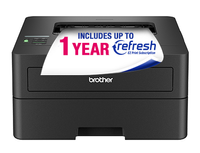Best home printer of 2025: I tested over 200 and these are my top pick printers for the home and home office
My pick of the best printers for the home and home office
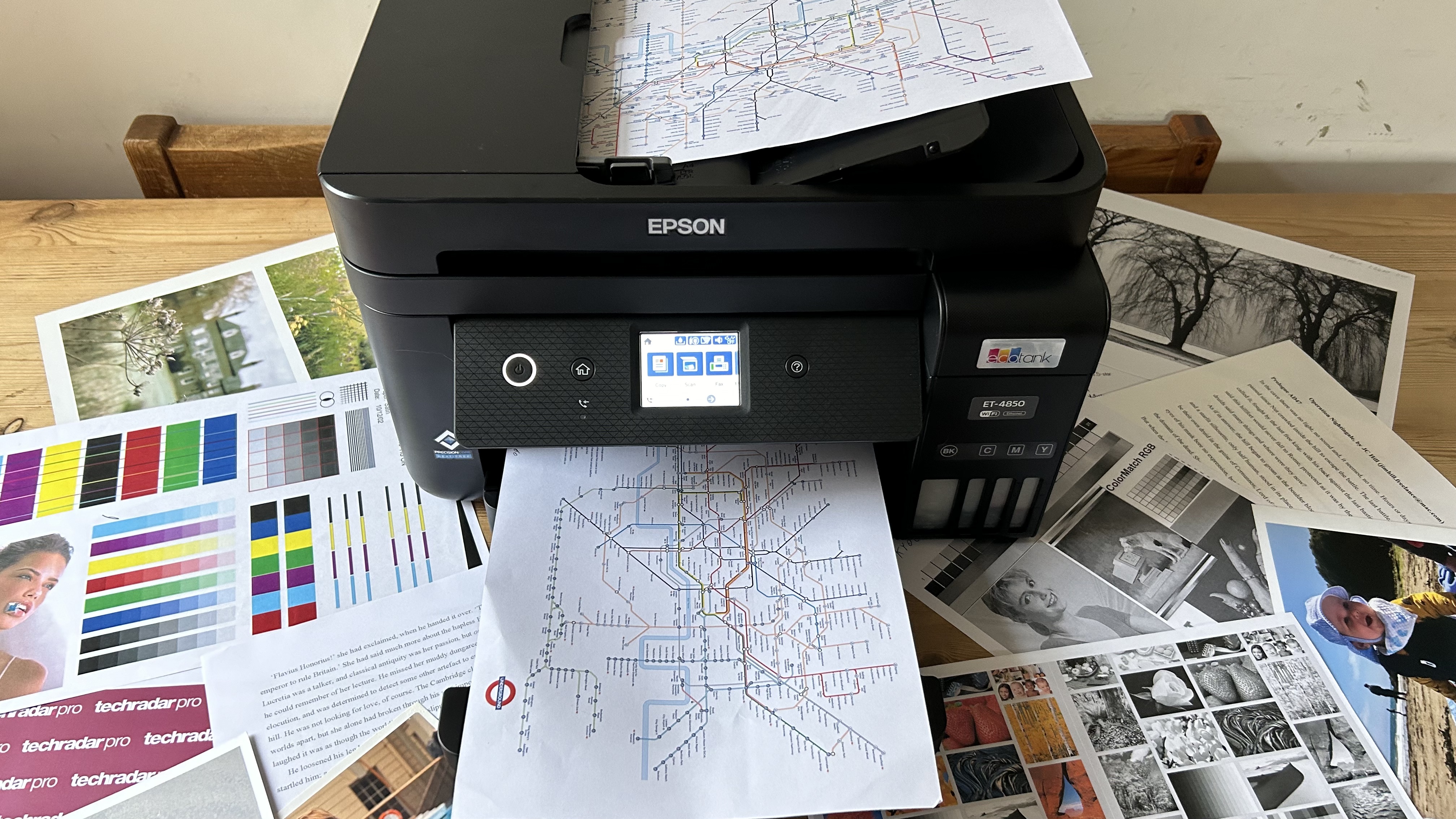
For the best home printer units, I look for several core features to see if they make the grade (and my round-up). Specifically, I want to see fast and accurate printing, high-resolution outputs, and extras that streamline printing at higher volumes, like a scanner and copier, and automatic document feeder (ADF). I always explore on-going running costs for cartridges, toners, and refillable ink, too.
In my experience, the Epson EcoTank ET-4850 is still the best home printer for most people. I've reviewed over 200 printers for the home and office, and this ink tank model continues to impress me with its speed, precision, and the sheer value for money it offers.
I've personally tested each model on this page, with some of the best small business printers and home printers suitable for everyone, from printing photos and documents to home office models that can do it all.
Reader offer: Get 10% off on Brother Wireless HL-L2460DWF Laser Printer
This brand-new printer from Brother includes up to 1 year of toner with a refresh subscription meaning you never run out of it. Designed to produce high-quality print copies, this Brother Laser printer can print with a speed of up to 36ppm and holds 250 sheets in the paper tray. This printer supports the Brother app so you can print from anywhere. To get 10% off on this printer, use code TAKE10NOW.
Preferred partner (What does this mean?)
Quick list
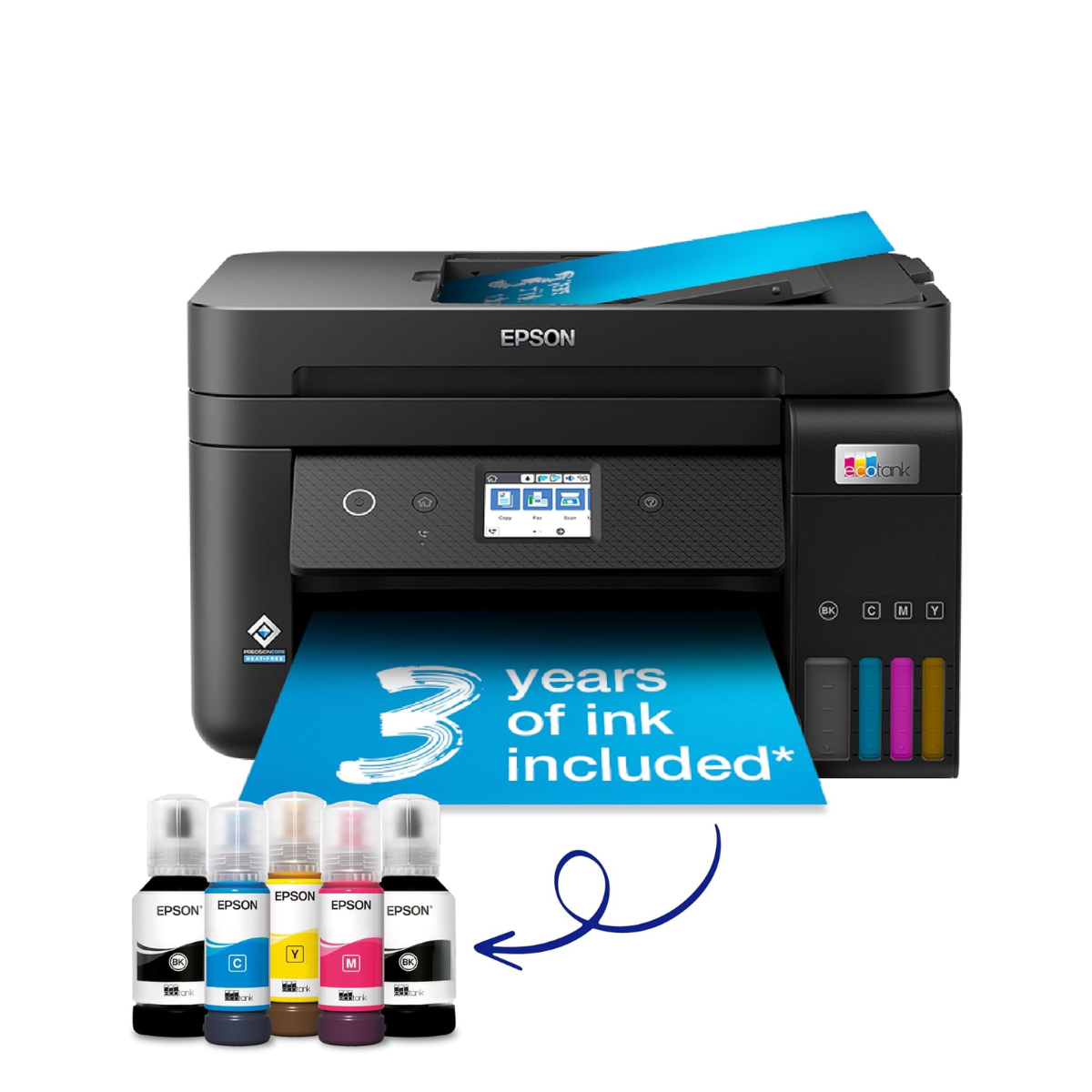
Best home printer overall
Quick to print, seriously accurate, and cheaper to run thanks to the refillable tanks, the Epson EcoTank ET-4850 is a stand-out home printer suitable for almost any print-run.
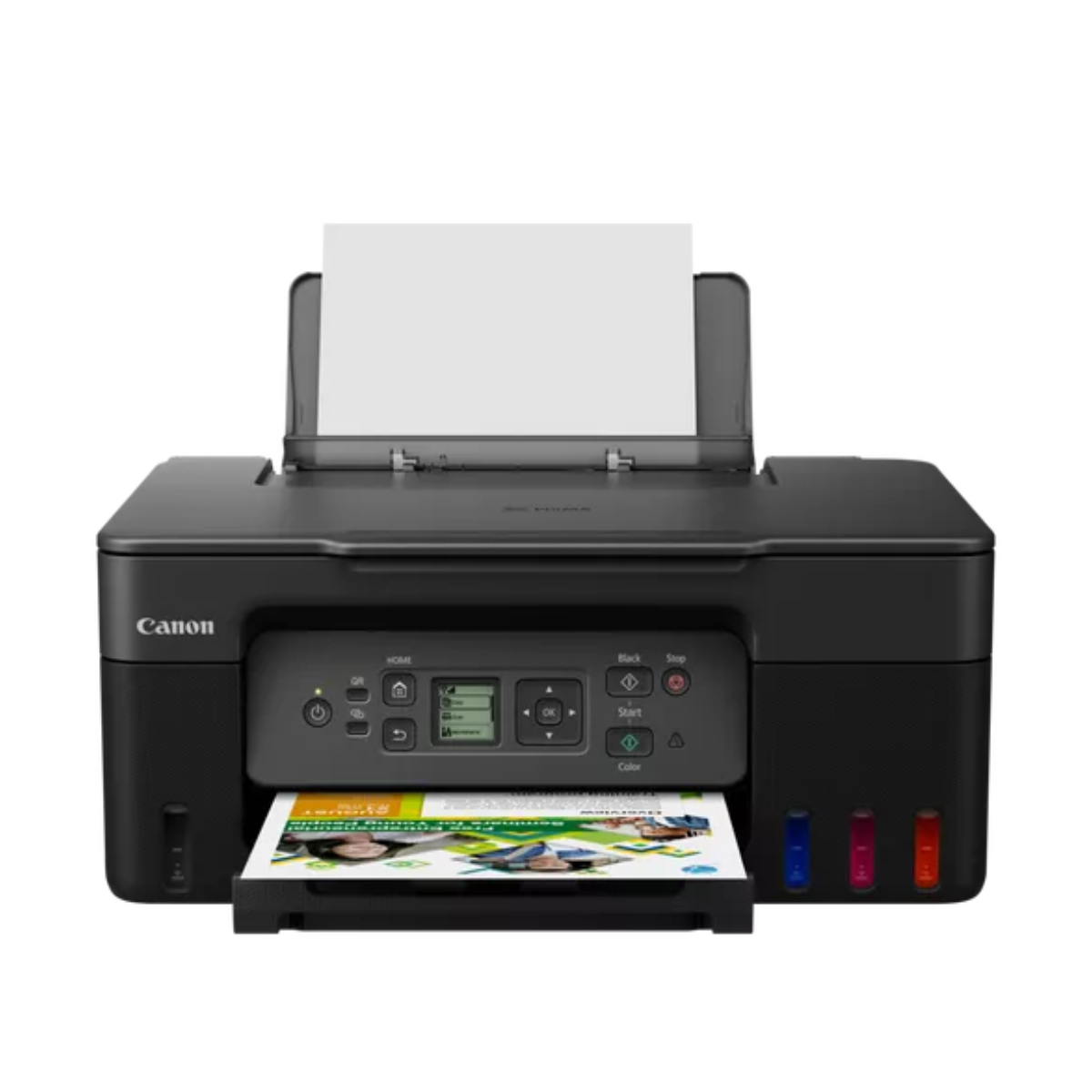
Best home printer for refills
If the Epson model doesn't do it for you, then I strongly recommend the Canon PIXMA G3270 for those who want a home printer with refillable ink tanks. A delight to use.

Best home printer on a budget
Easily one of the cheapest printers around, the HP Envy Pro 6420 is compact, boasts ADF, and strong app support for simple set-up and printing.
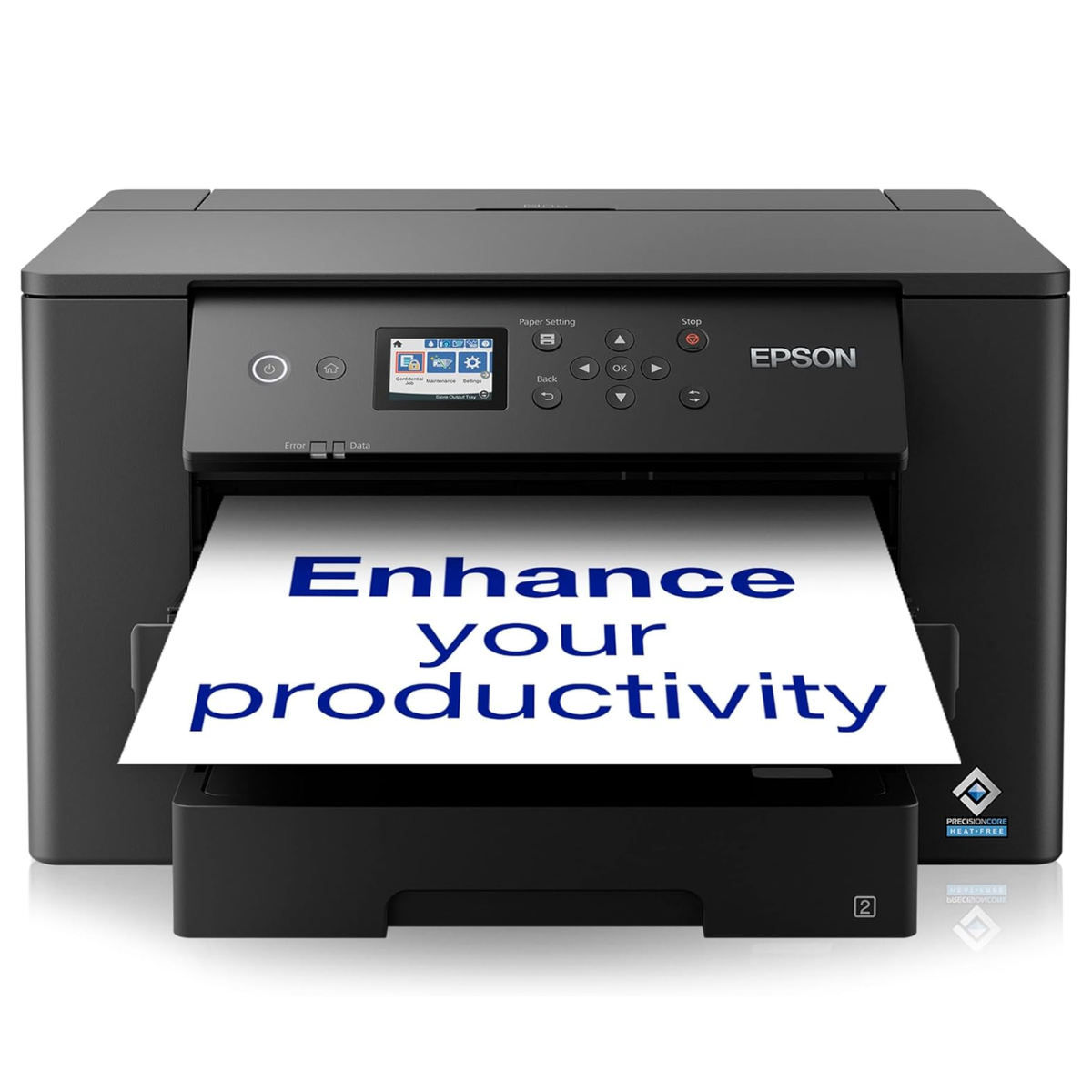
Best home printer for home offices
For those who need a reliable printer for business use, the Epson WorkForce Pro WF-7310 is unit that supports up to A3 printing, with vivid results. All at a great price.
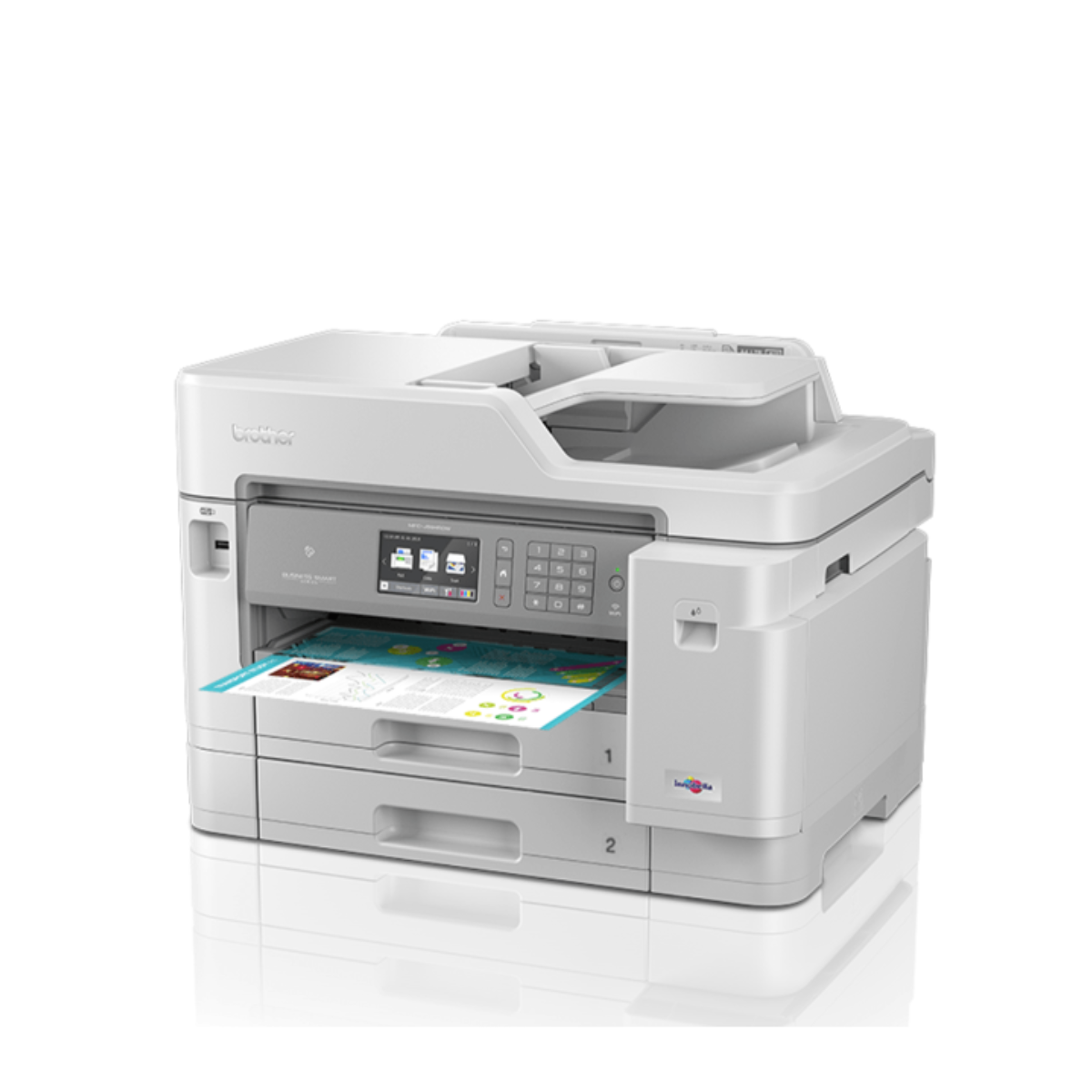
Best home printer for inkjet cartridges
If you prefer a home printer that supports classic inkjet cartridges, there's much to like about this 4-in-1 model for up to A3 prints with large sheet and ink capacity suitable for business and home use.

Best home printer with guillotine
This 3-in-1 home printer from Brother boasts all the usual extras you'd expect from a top model - but also includes a guillotine. If you need it, you'll be thankful for it.
See more printers
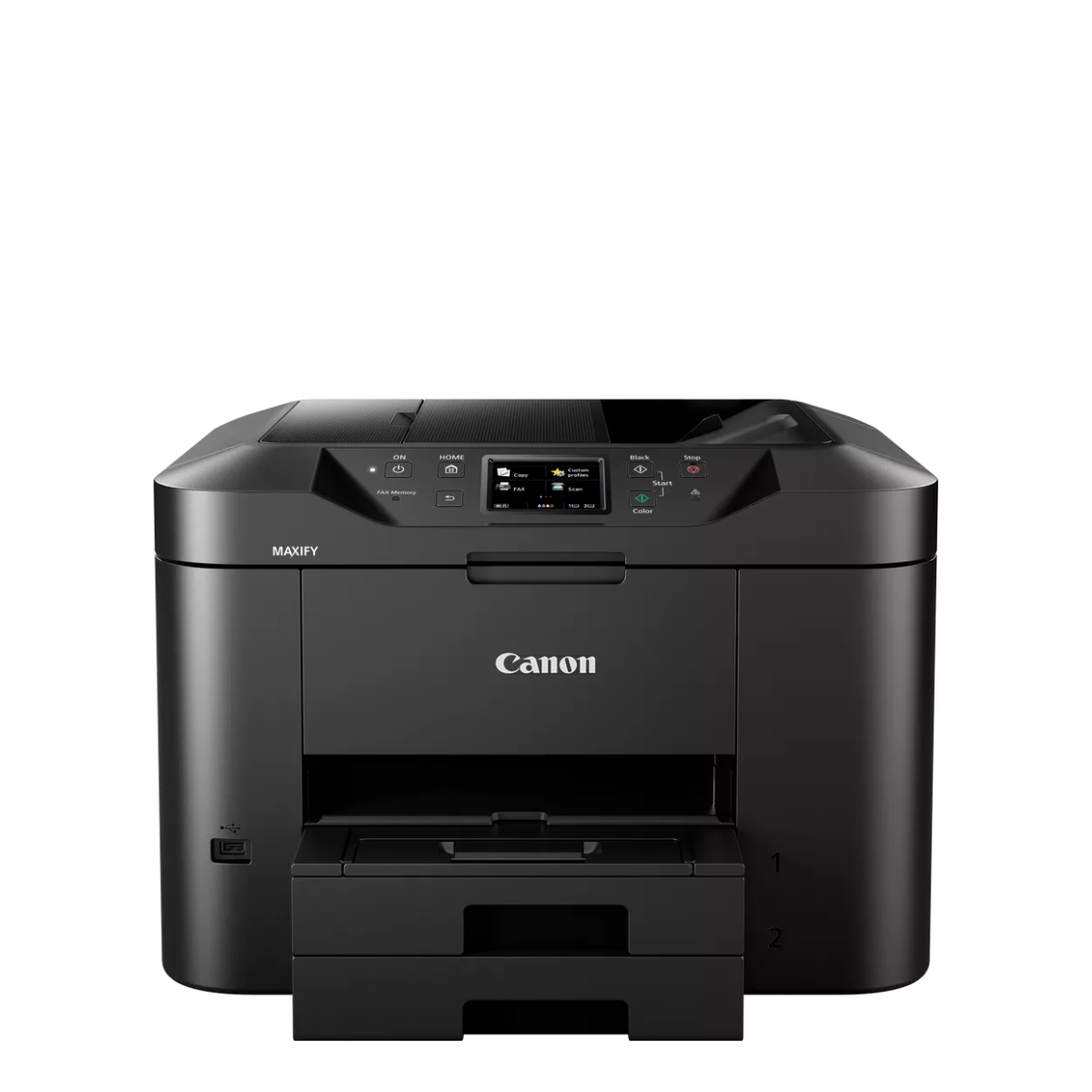
Best home printer for capacity
Tired of refilling the paper tray? This Canon home printer features two 250-sheet trays and a 50-sheet ADF that lets you print for longer without adding more paper.
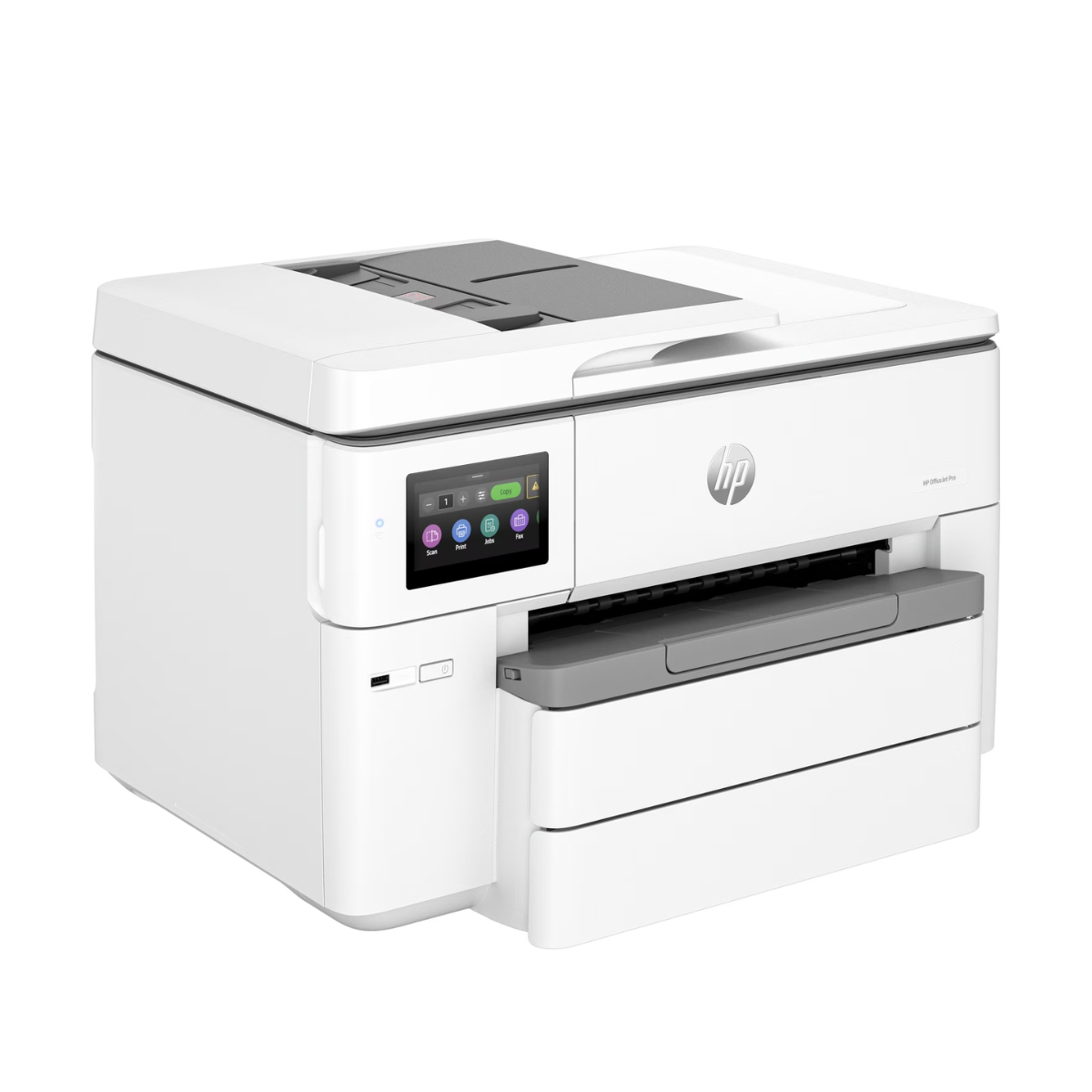
Best home printer for wide-formats
While you'll find a number of wide-format home printers on this list, the HP OfficeJet Pro 9730e stands out as the top model for those printing in tabloid or A3 considering the cost.
Best home printer overall
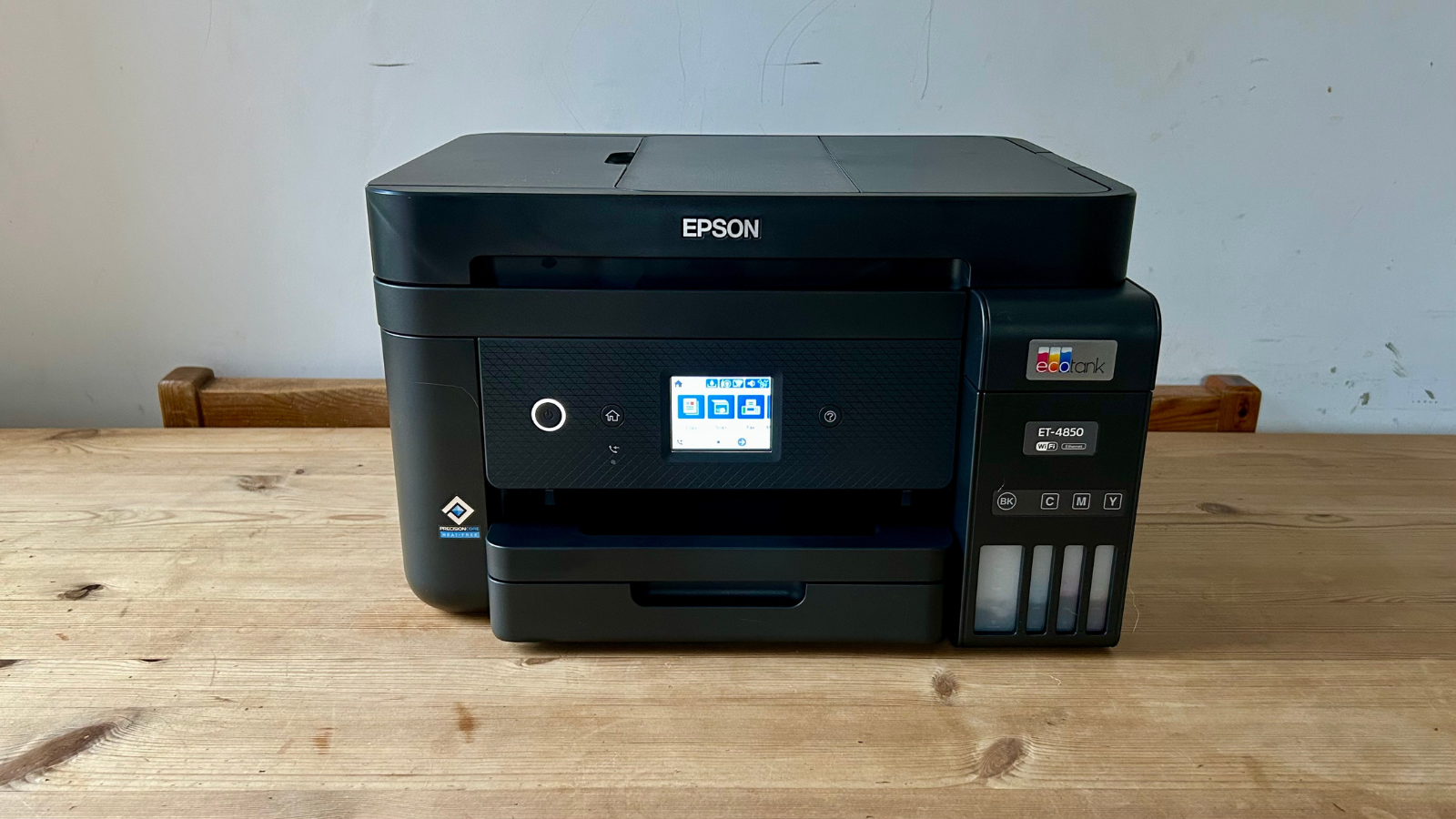

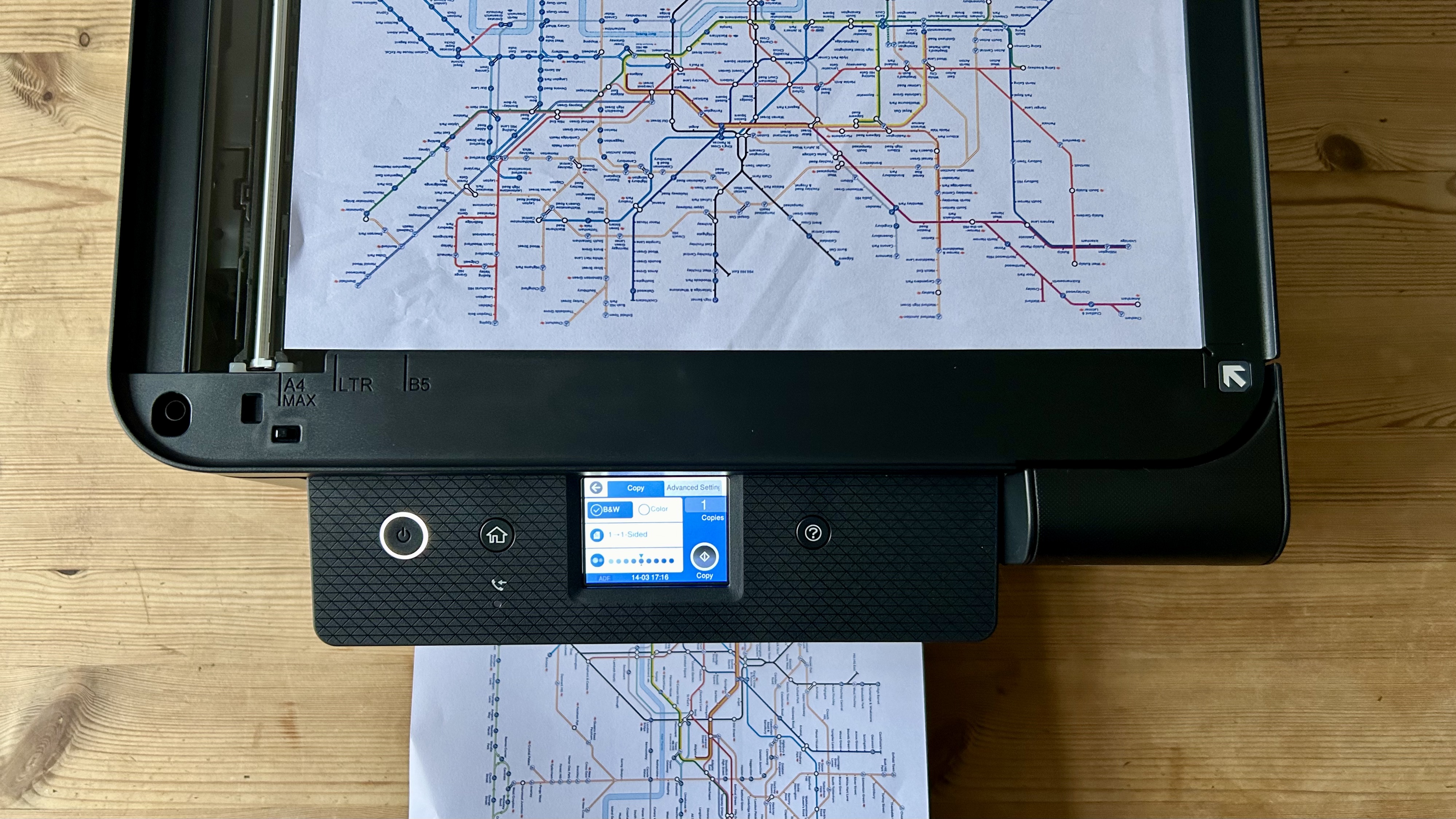

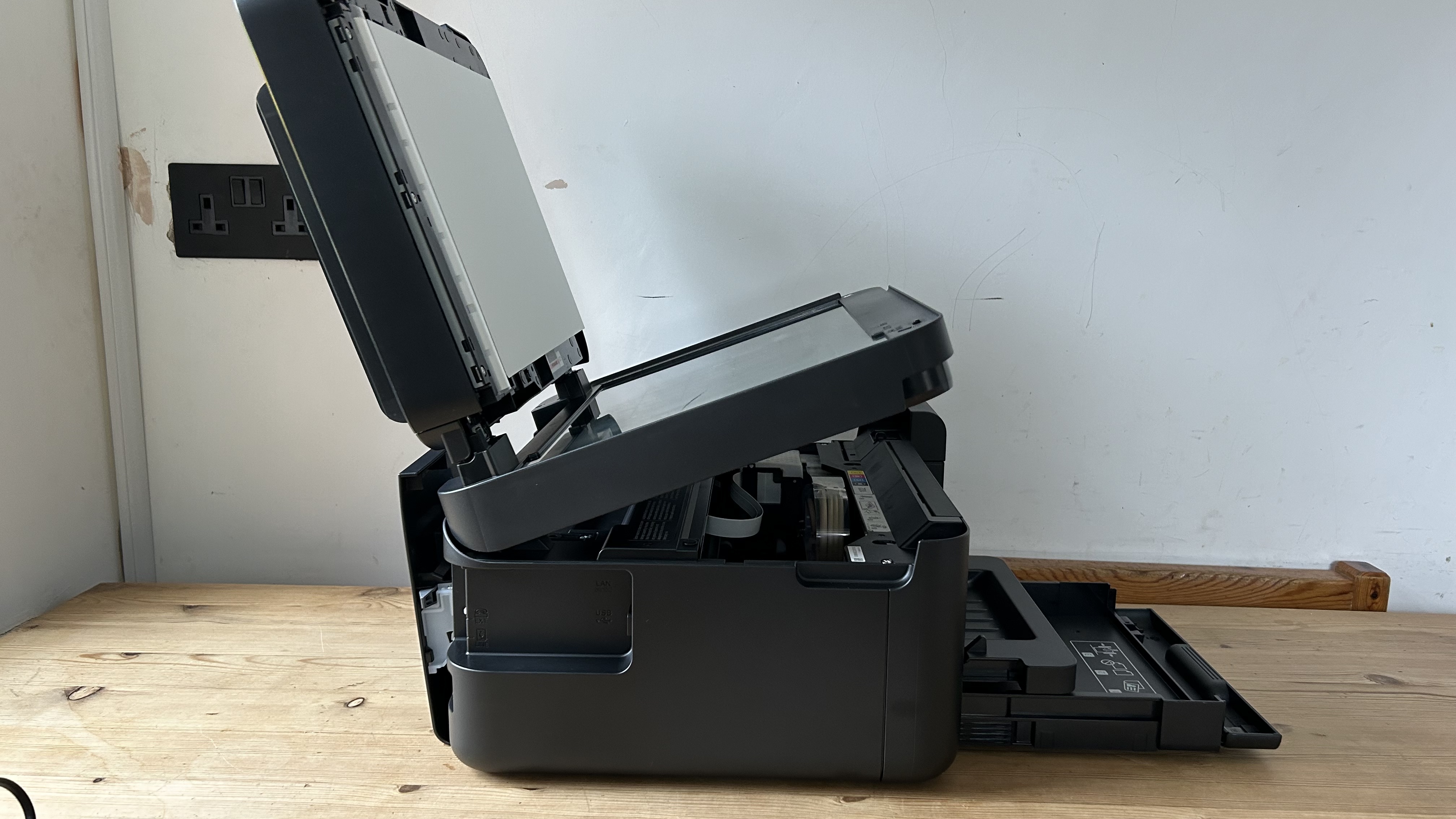
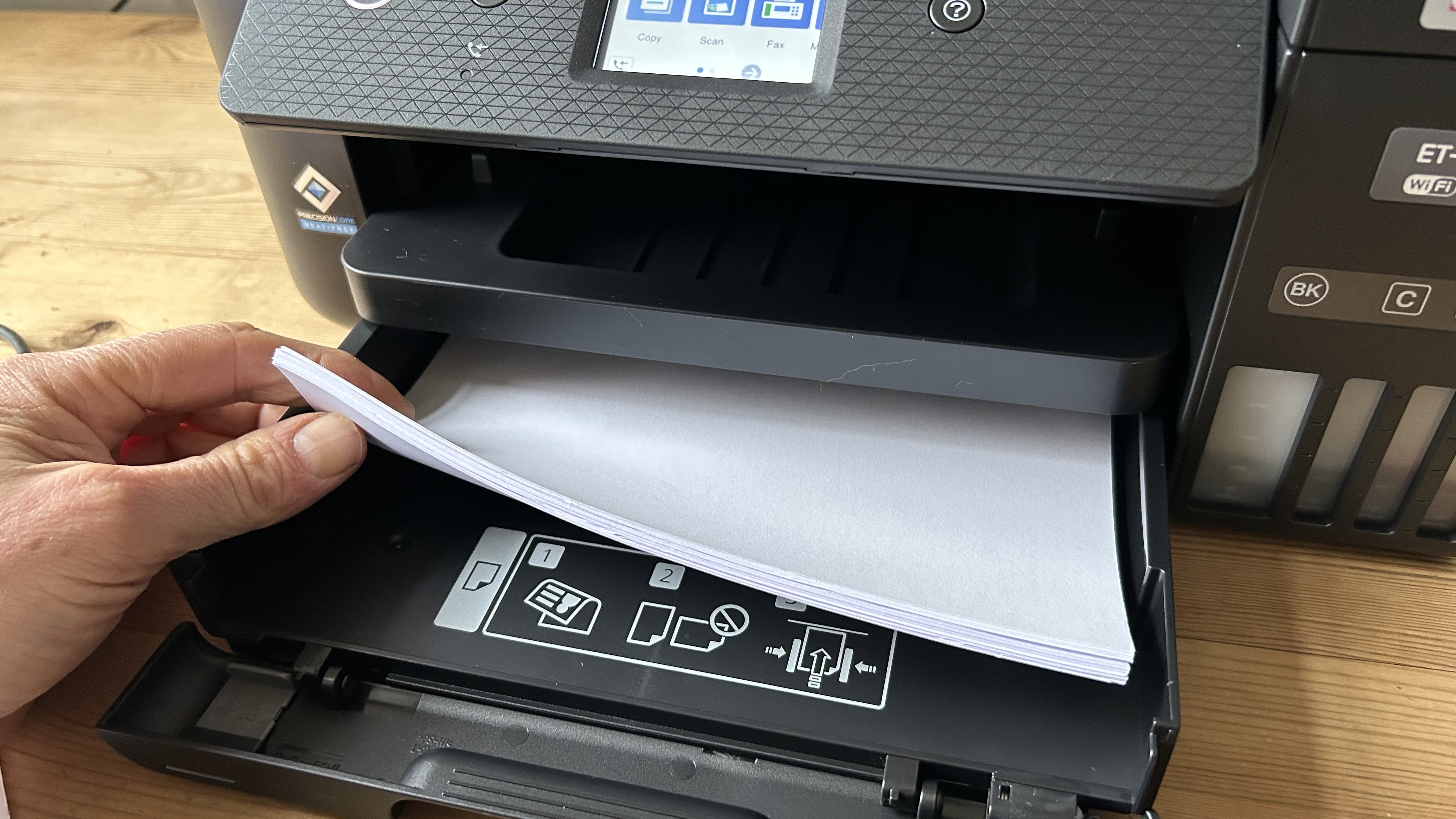
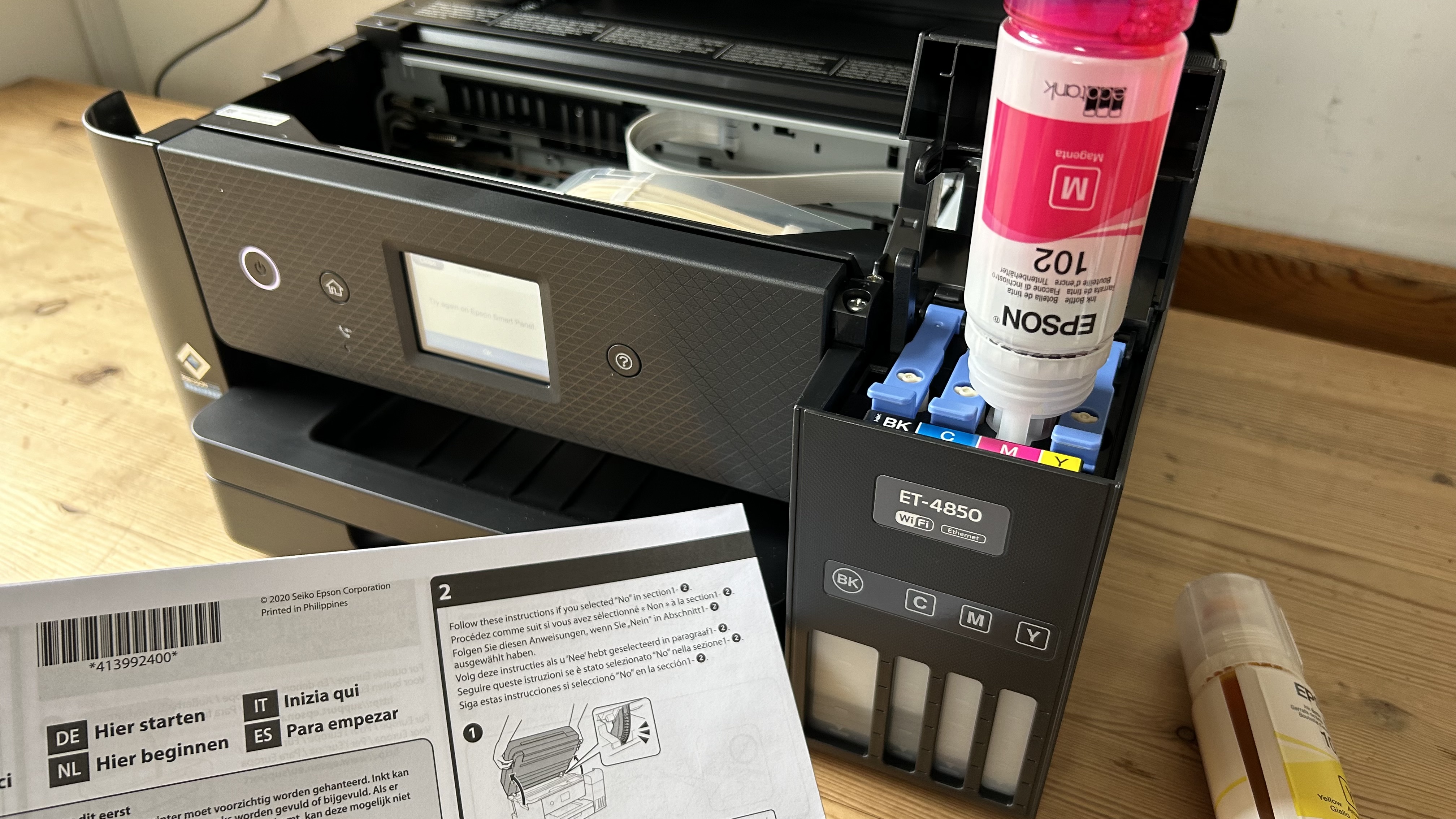
Specifications
Reasons to buy
Reasons to avoid
✅ You print a lot of color documents and your print budget is limited. Epson’s bottled ink is so much cheaper than cartridge ink, you won’t need to worry about your consumables bill.
✅ You work from home and you need business features like a fax modem, ADF a roomy input tray. The multi-purpose tray is also very useful for single print jobs or printing on headed paper.
❌ You only print black and white documents. If that’s the case, a mono laser printer would be a better fit.
❌ You need to print larger tabloid-size documents. This one can handle anything up to Letter or A4 paper.
The mid-range Epson EcoTank ET-4850 is my pick for best home printer, with wide appeal thanks to its broad functionality, generous inbox ink, and reasonable pricing.
It has all the features I think are essential in a small office printer, such as an ADF, auto duplex, touchscreen and fax, while dispensing with luxuries like NFC or single-pass dual scanning. It also printed my test pages with enough accuracy to make it the best home printer for the widest group of people.
It’s a pity there’s no multi-purpose tray in addition to the 250-sheet main tray, but it makes up for this with excellent all round print quality. It’s easy to use, thanks to the large touchscreen interface and it's reasonably quick to print.
The real selling point, though, is the very low running cost. Epson’s inexpensive bottled ink is around 90% cheaper than cartridge ink and you’re getting five bottles in the box, which could yield almost 20,000 pages.
Read our full Epson EcoTank ET-4850 review.
Best home printer for refills
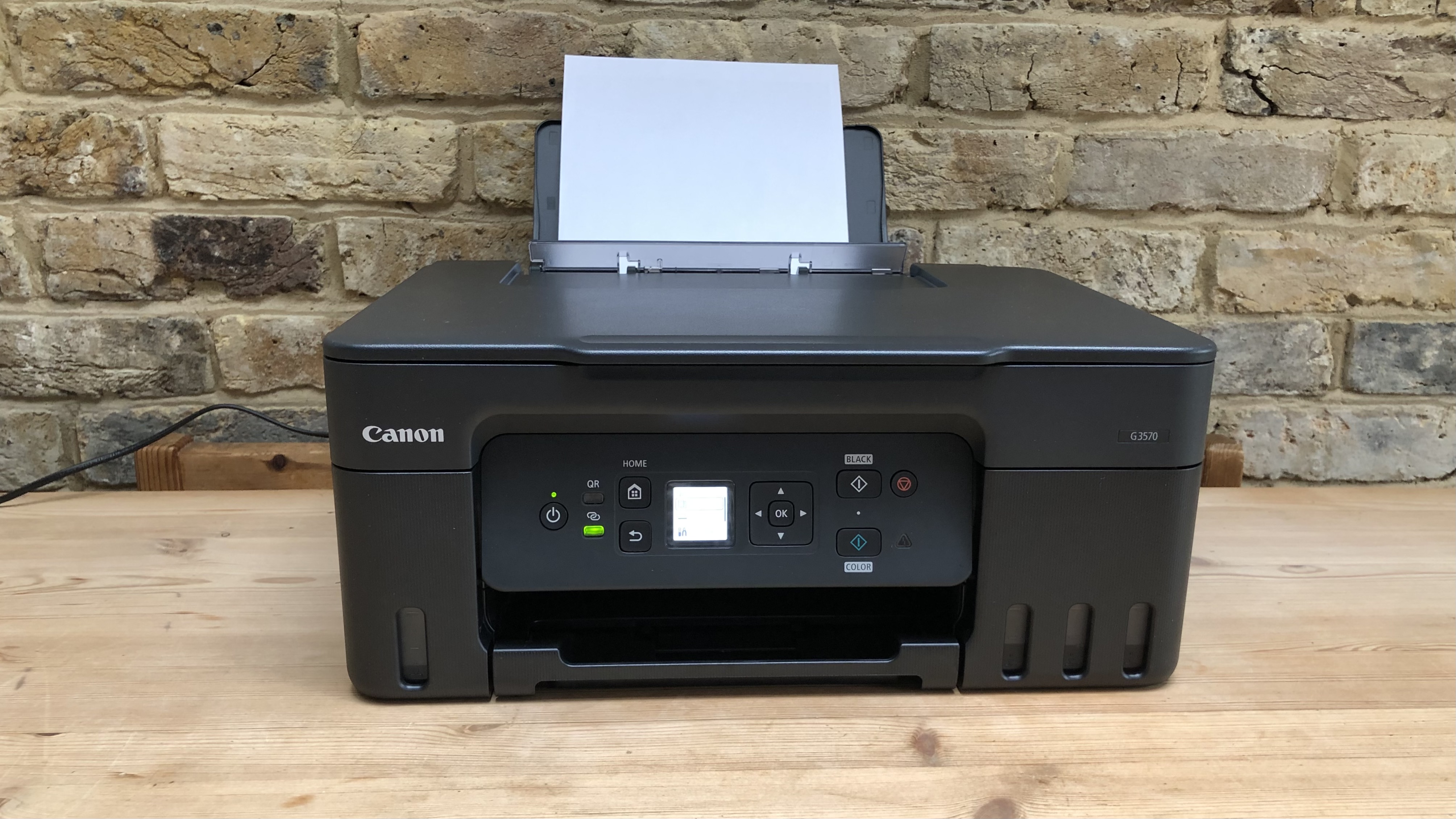
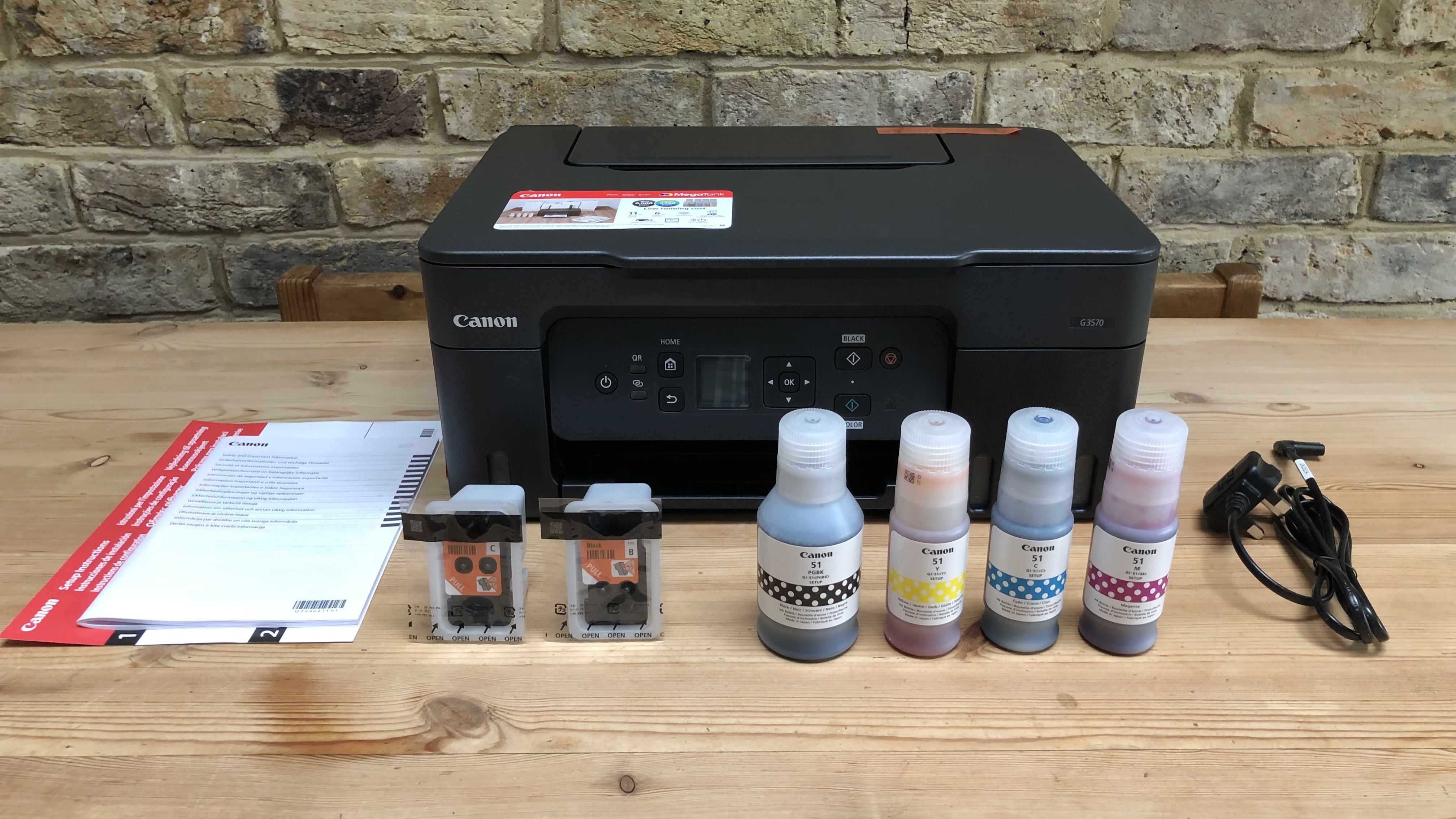
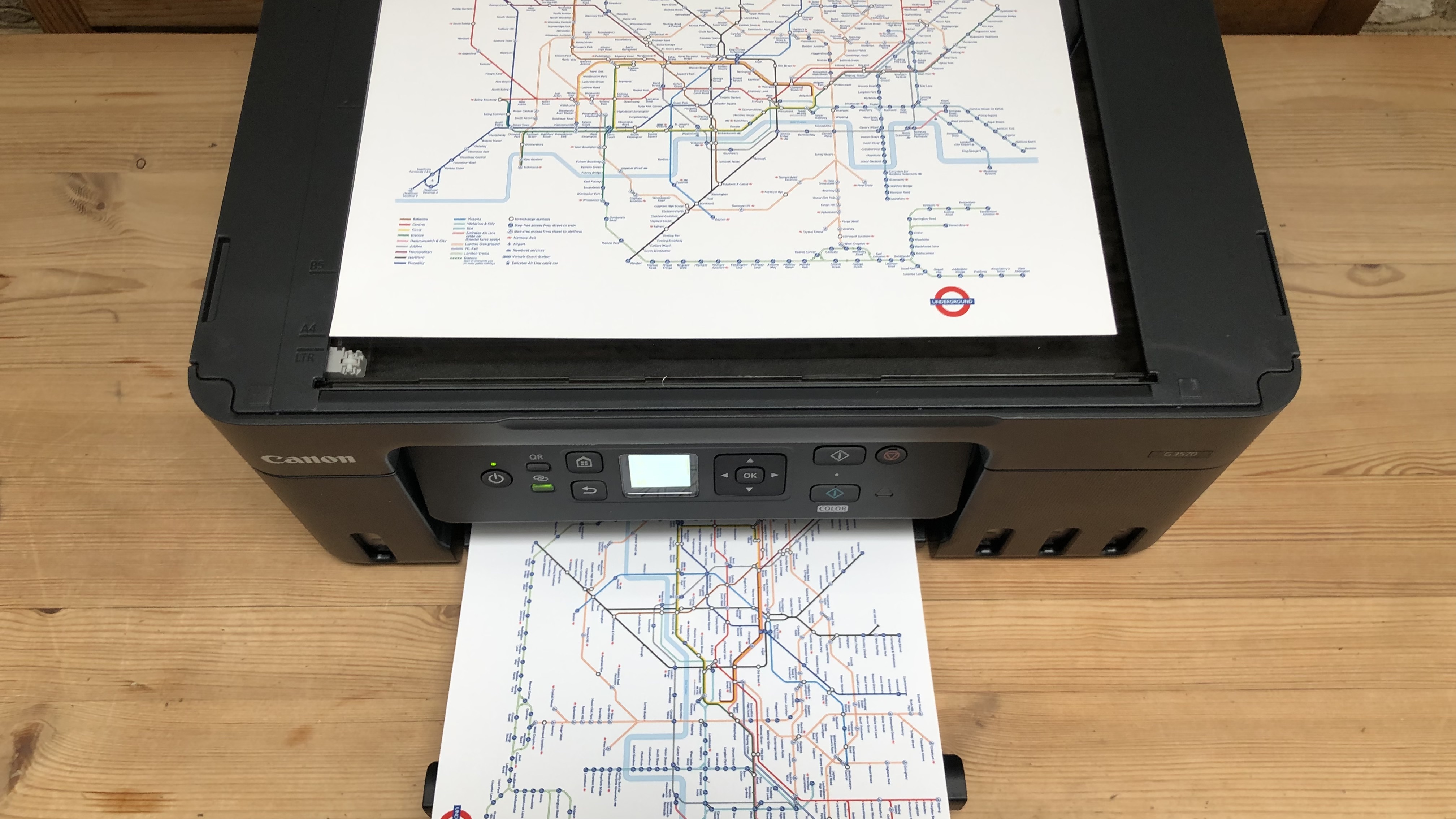
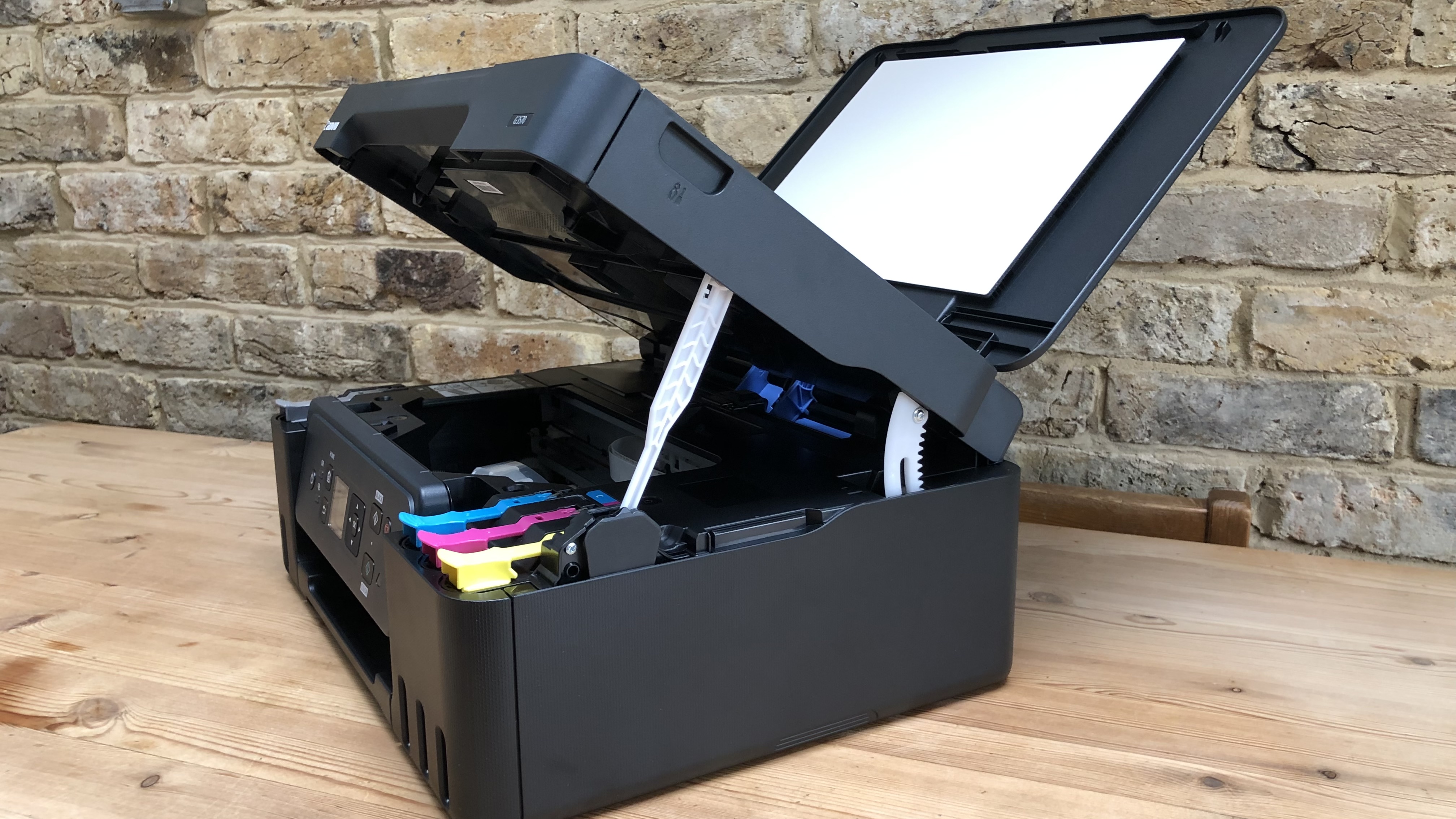
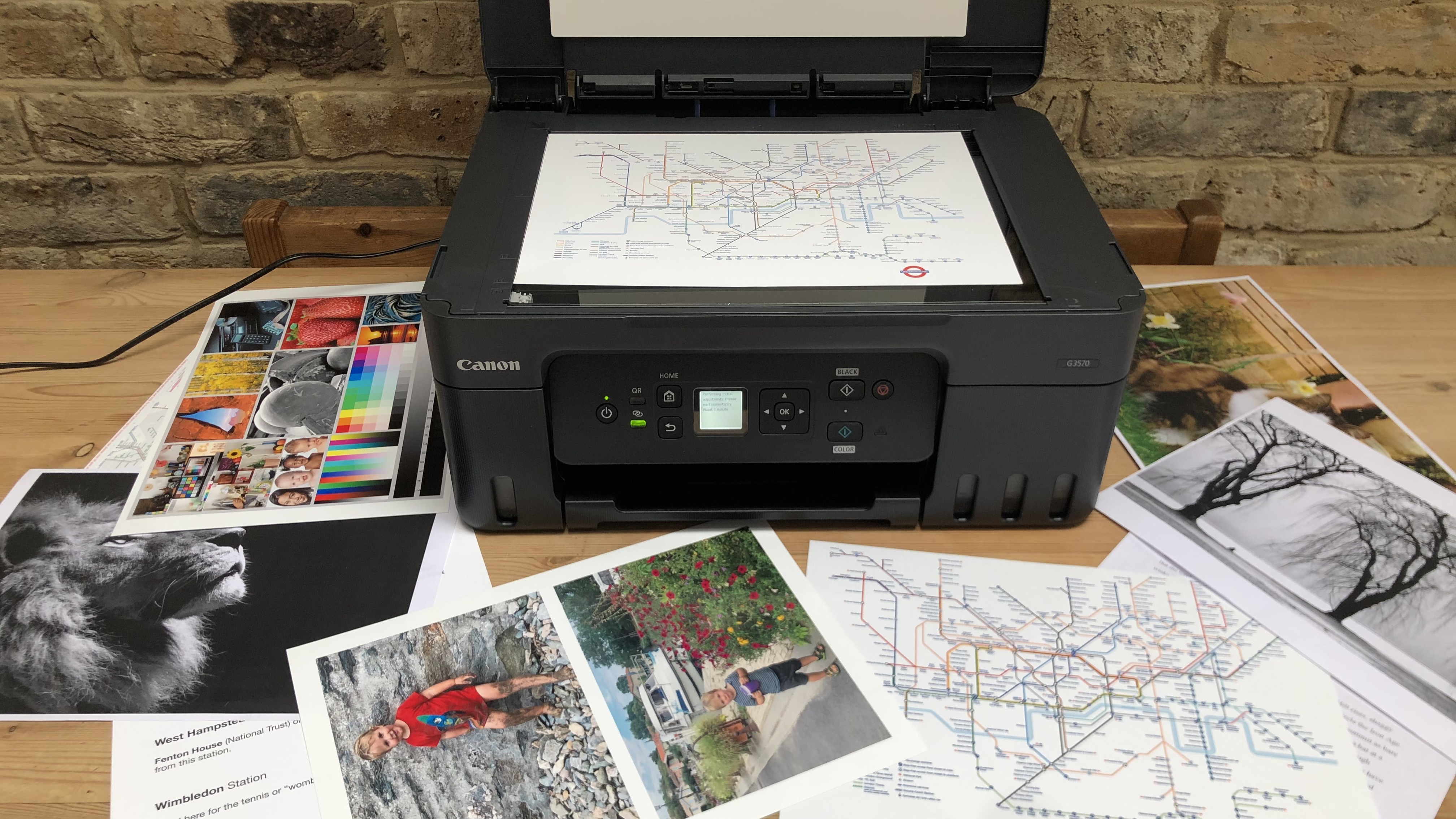
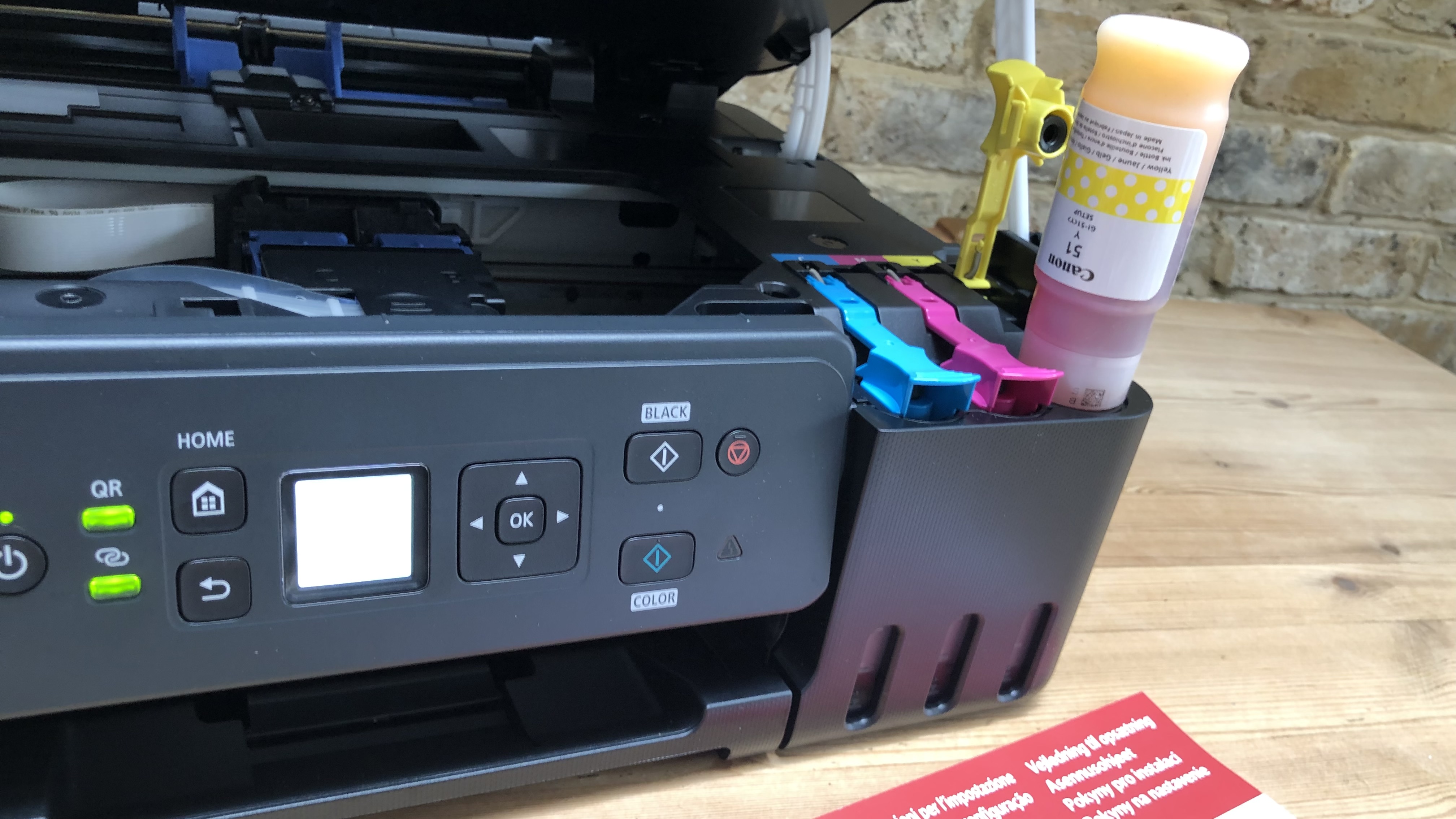
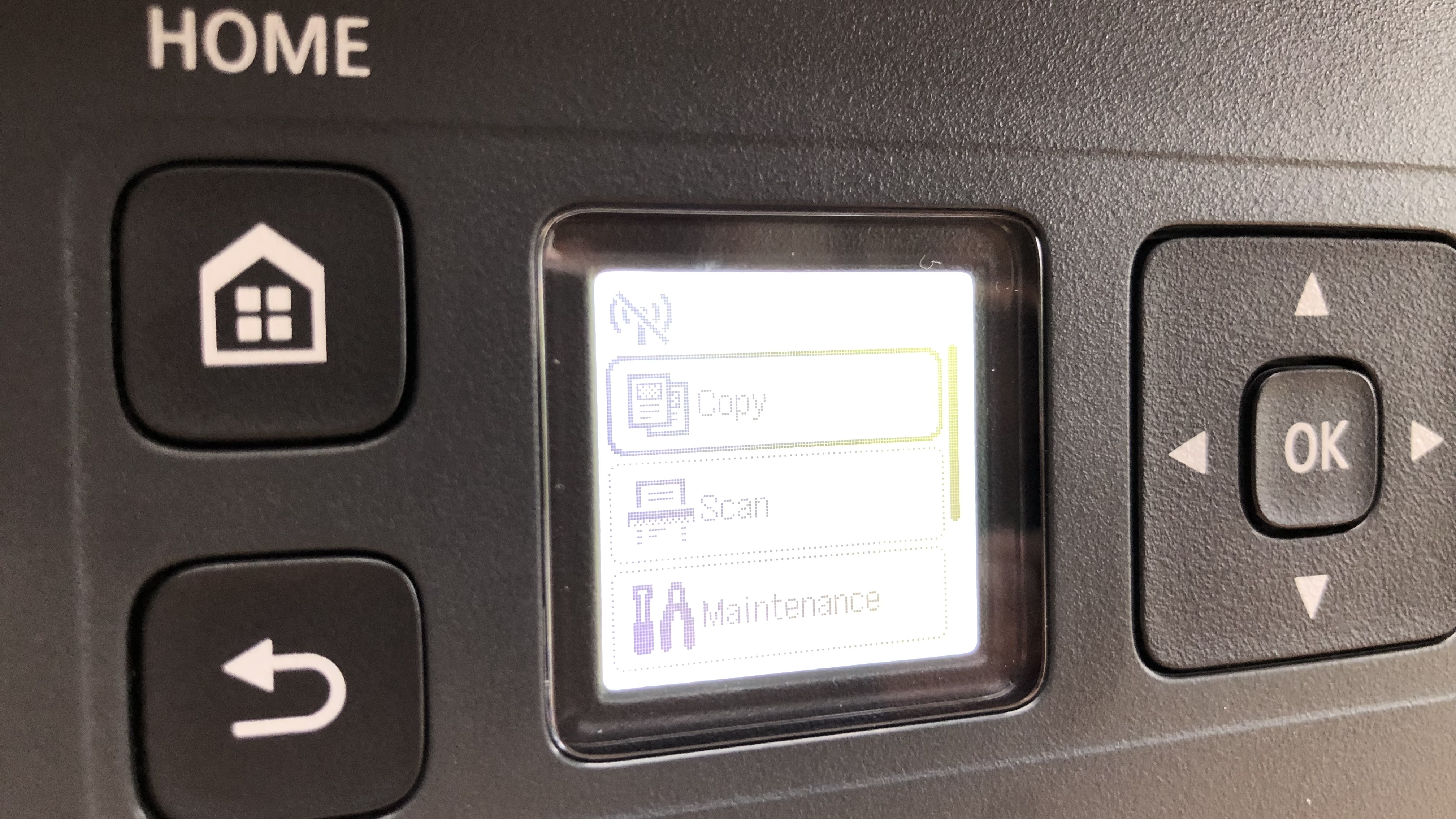
Specifications
Reasons to buy
Reasons to avoid
✅ You print a lot of color documents and photos. Bottled ink for this MegaTank is inexpensive and each tank holds enough to print several thousand pages.
✅ You have limited space at home. This is the smallest supertank that I’ve tested and it won’t take up too much desk space
❌ You print mostly multi-page documents. There’s no auto duplex mode, so you’ll have to turn the pages over yourself.
❌ You need to print quickly. The print rate is 11ppm (pages per minute) for black and white documents and it’s even slower in color.
The Canon PIXMA G3270, also called G3570, is an affordable all-in-one MegaTank. That means it has few features beyond printing scanning and copying, but big savings when it comes to consumables and lots of ink in the box.
During my tests, the device printed satisfactorily on every kind of paper that I fed into its 100-sheet tray and turned out sharp vibrant pages throughout the test. It has Wi-Fi built so you can print from your smartphone using Canon’s companion app. What you’re not getting is a touchscreen, a front-loading paper tray, or an auto duplex mode.
If you don’t mind squinting at the small display and manually turning over each page to print on the the other side, this stripped back MegaTank, makes faithful hard copies and prints crisp simplex pages relatively quickly.
It costs more than a cartridge-based equivalent, of course, but with bottled ink being around 90% cheaper and enough ink in the box to print 6,000 mono pages and 7,700 color, your running cost will be way lower. If you want to save even more money, check out our Canon coupon codes.
Read our full Canon PIXMA G3270 review.
Best cheap home printer
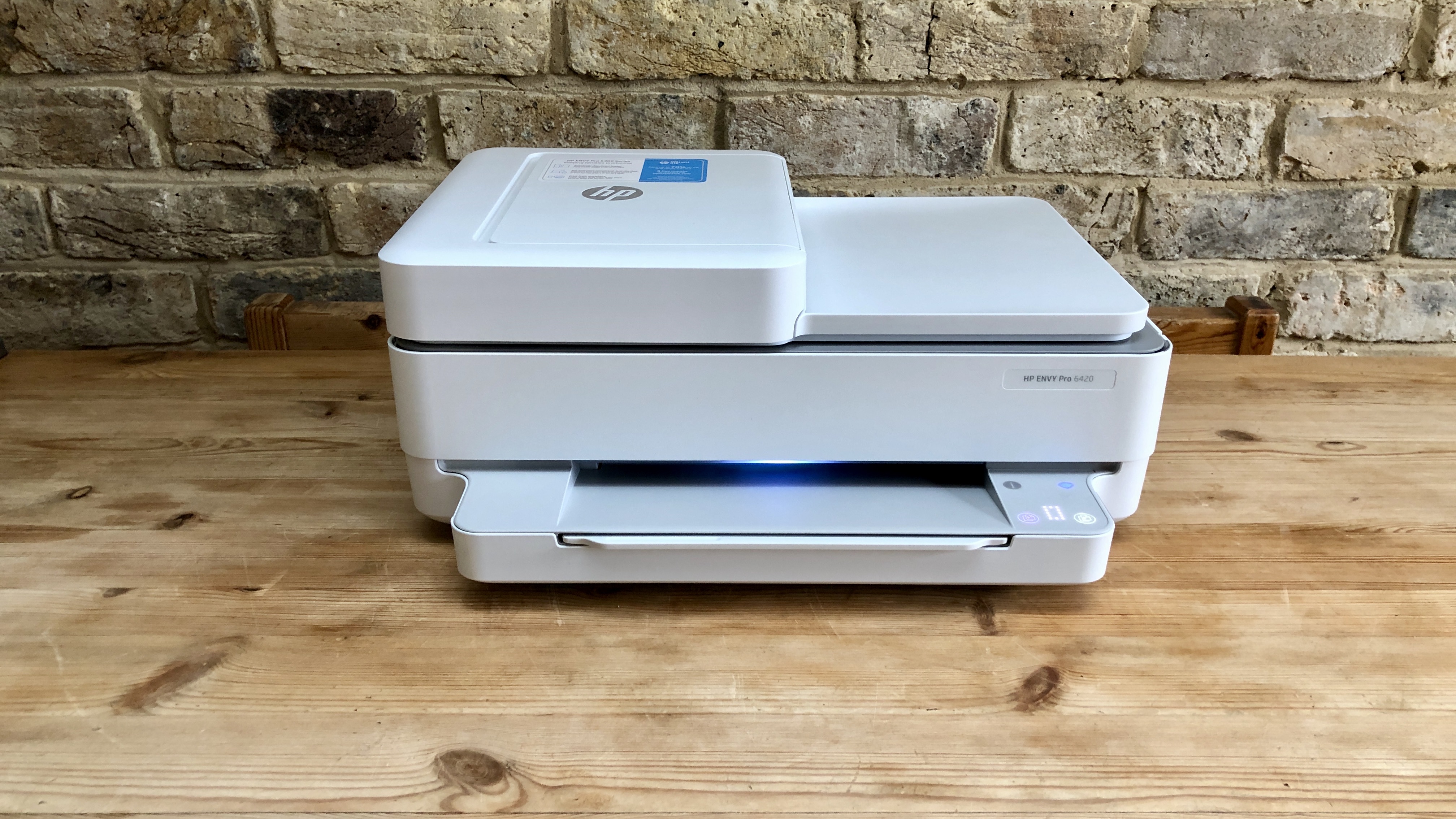
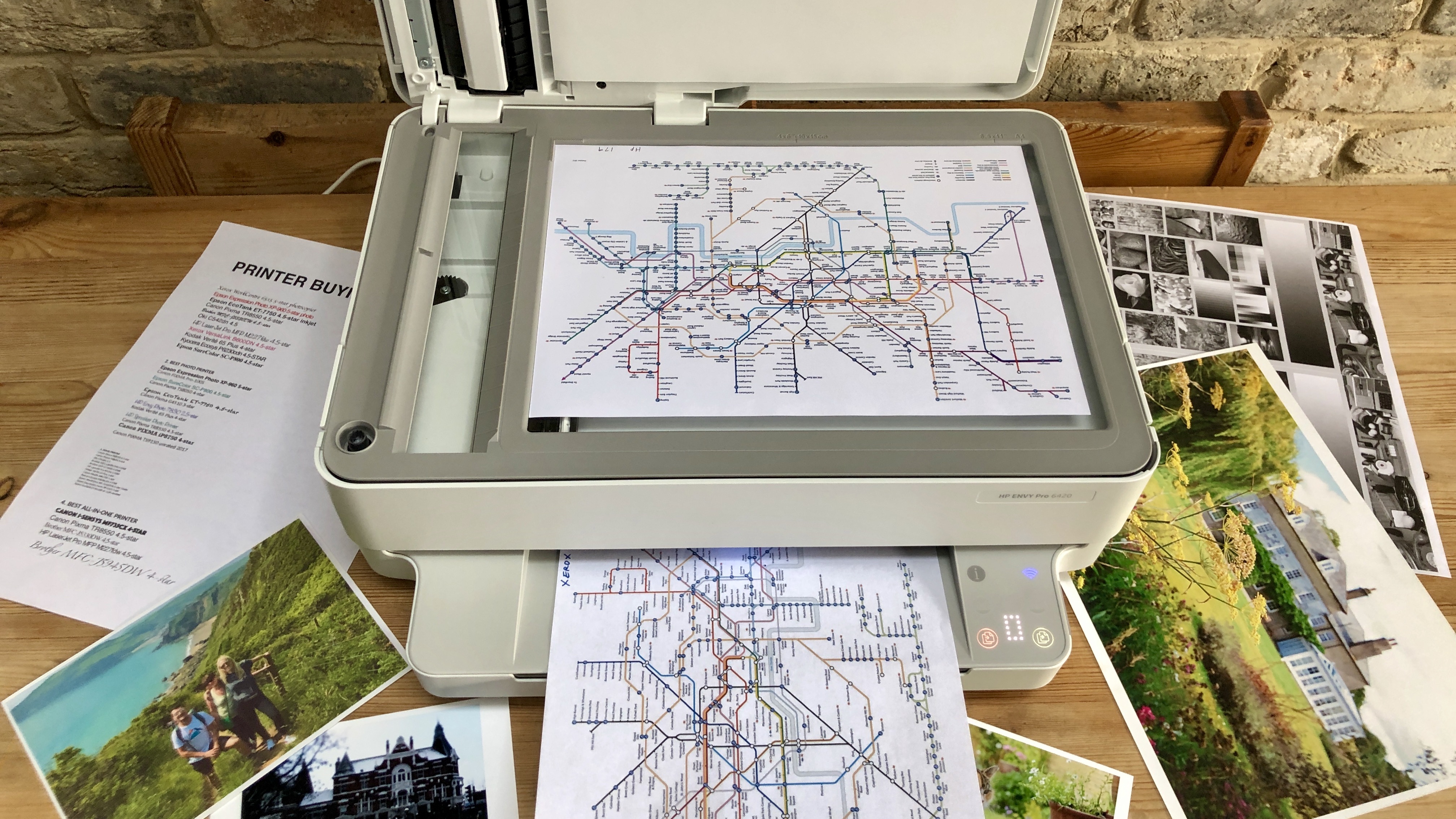
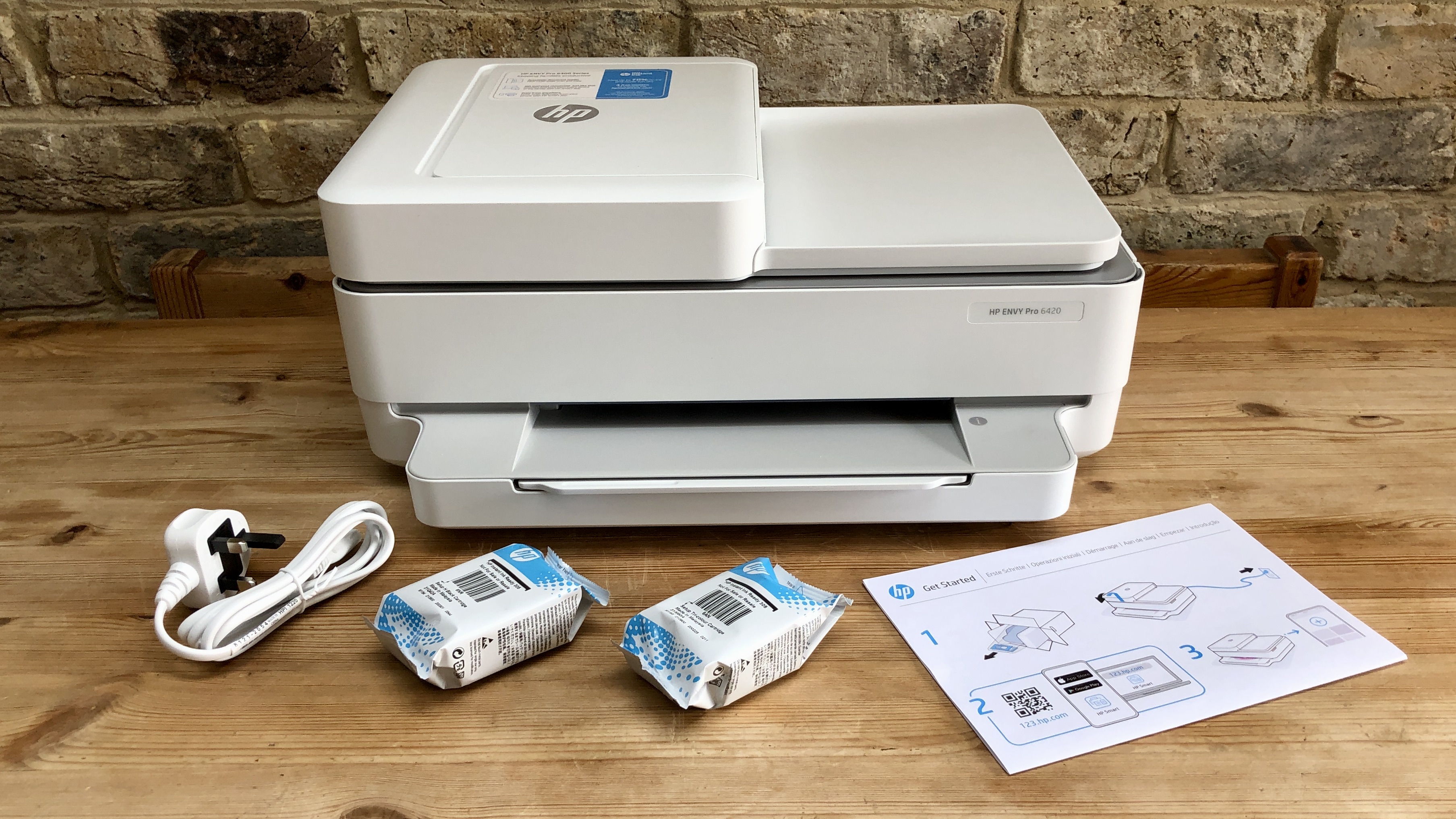
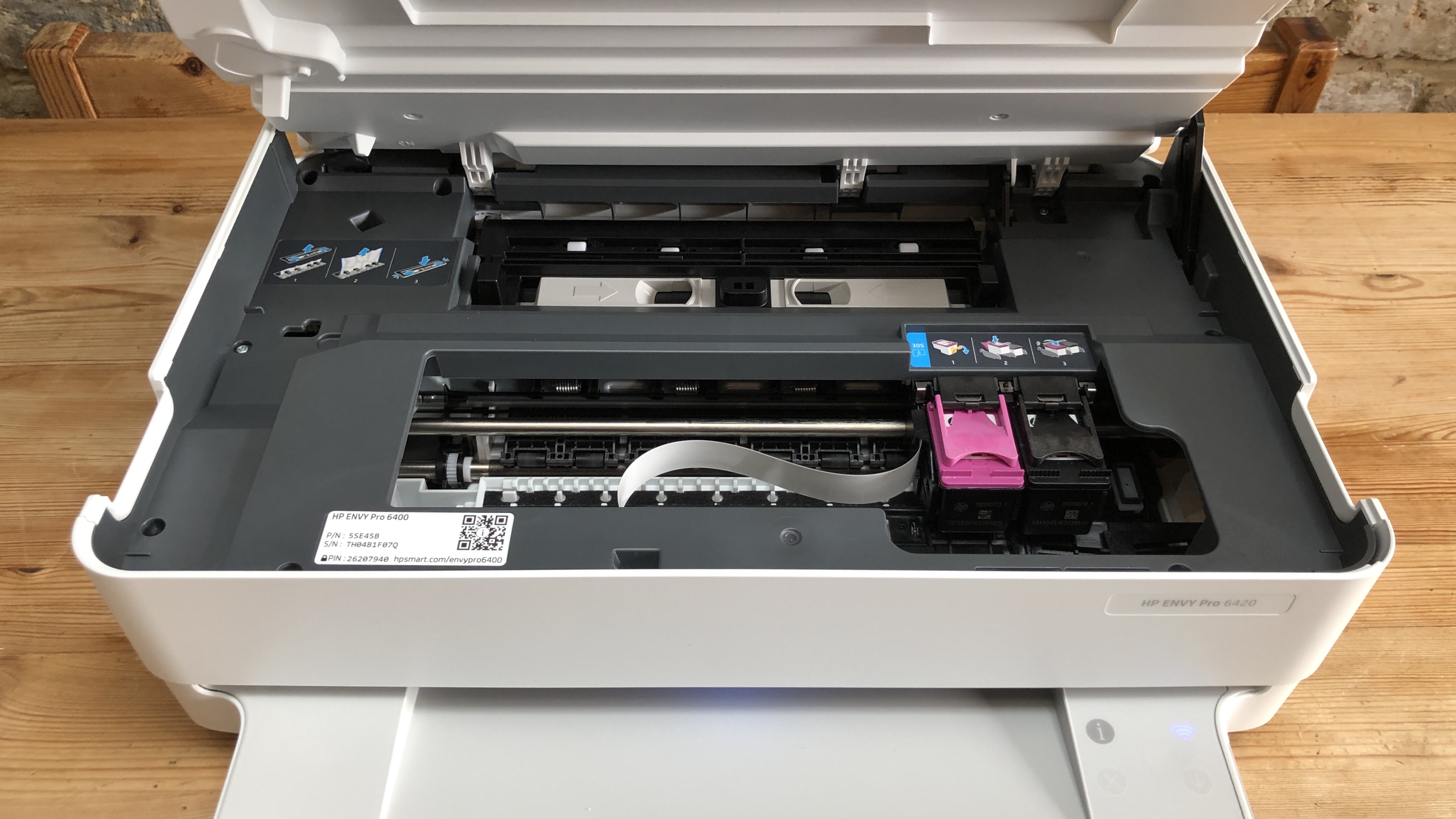
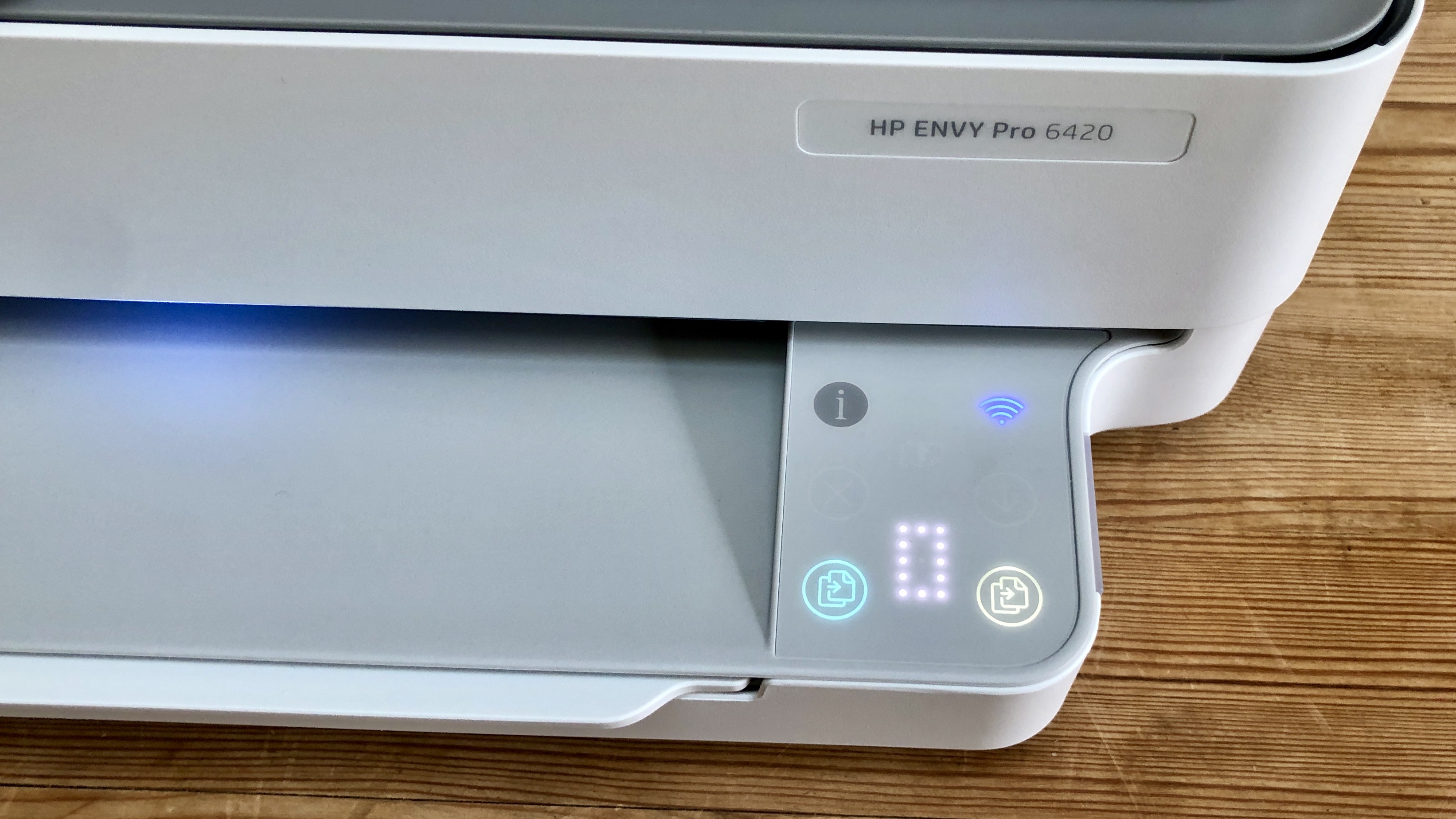
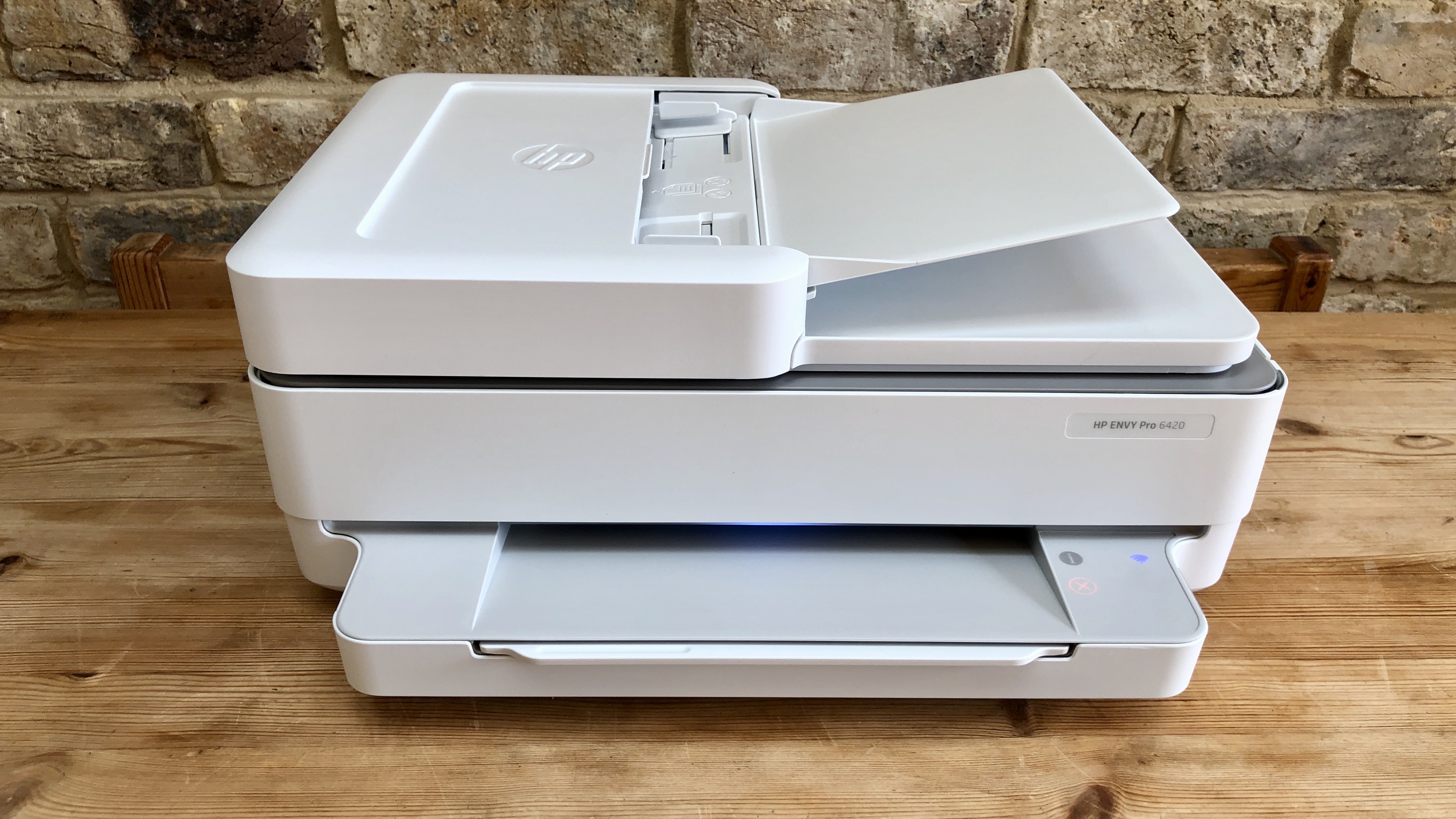
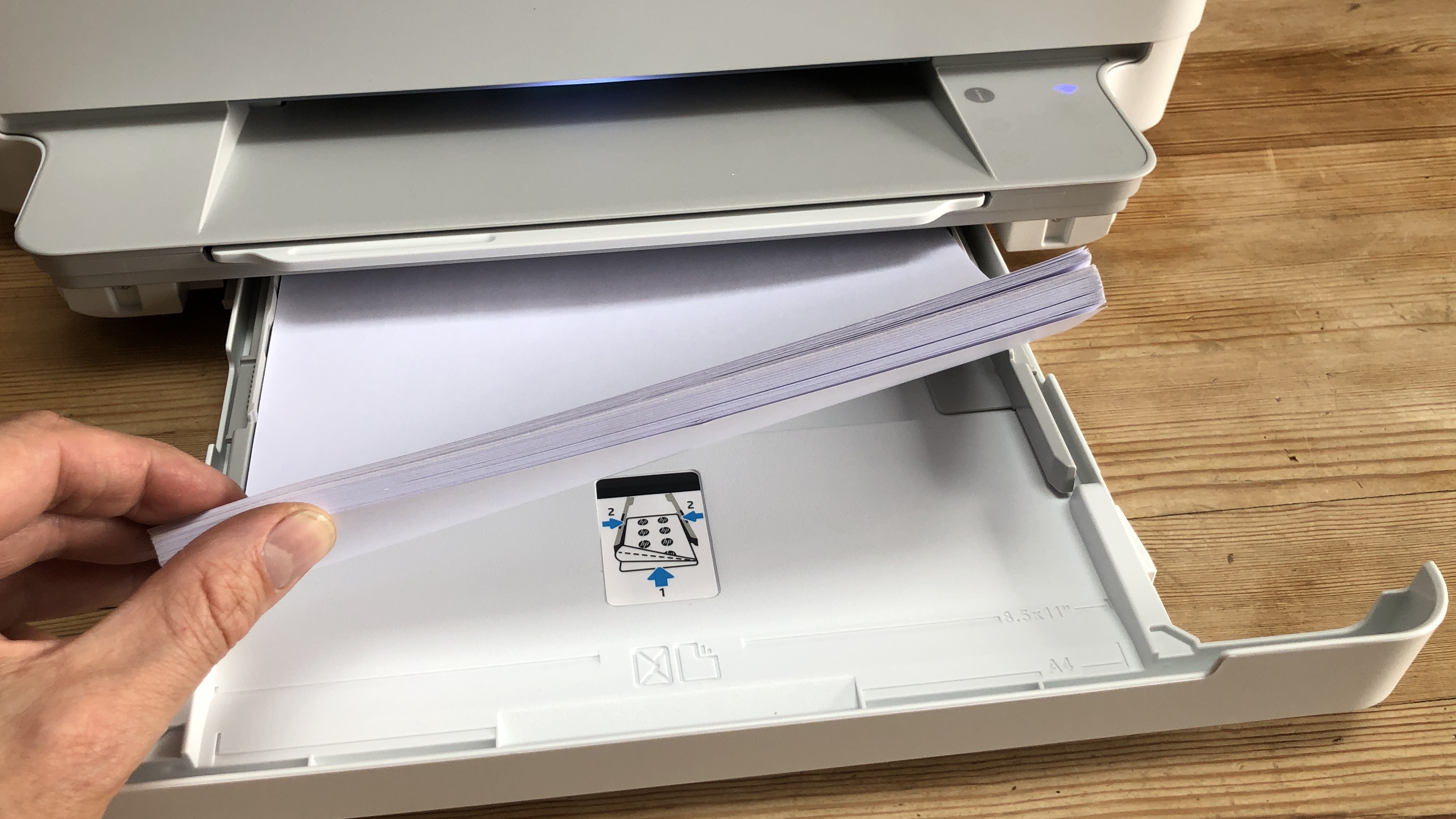
Specifications
Reasons to buy
Reasons to avoid
✅ You print documents including photos regularly but not in big volume. The print quality here is great, but the cost per page is not so competitive.
✅ You do everything from your smartphone. HP has an excellent companion app that makes printing, scanning and faxing via the cloud especially easy.
❌ You print a lot. HP’s cartridges are expensive and the tri-color cartridge will need replacing the moment one of its three inks runs low.
❌ Your Wi-Fi network is unreliable. There’s no Ethernet port on this wireless printer, so you can’t hard wire it to your router.
Looking for a budget-friendly home printer?? With the ability to print, scan, copy, and even fax (via your smartphone), the HP Envy Pro 6420 is my recommendation.
While the print speed may be slow, the Envy Pro 6420 can duplex print and photocopy stacks of up to 35 pages with its inbuilt ADF (automatic document feeder). Instead of an Ethernet port, it has Bluetooth and self-healing Wi-Fi built in, making mobile printing with the HP iOS/Android app a breeze.
Despite its limited paper capacity and slow print speed, I was impressed with the overall print quality of the Envy Pro 6420. Replacement ink cartridges are expensive, unless you commit to HP's Instant Ink subscription service, although personally, I’d rather shop around myself for the cheapest cartridges. Another thing I found it excelled at during review is is photos, which makes this one of the best printers for the family to share.
Overall, I found the HP Envy Pro 6420 is a solid choice for those needing a compact and affordable home printer. Find the best deals on HP printers with our HP discount codes.
Read our full HP Envy Pro 6420 review.
Best home printer for home offices
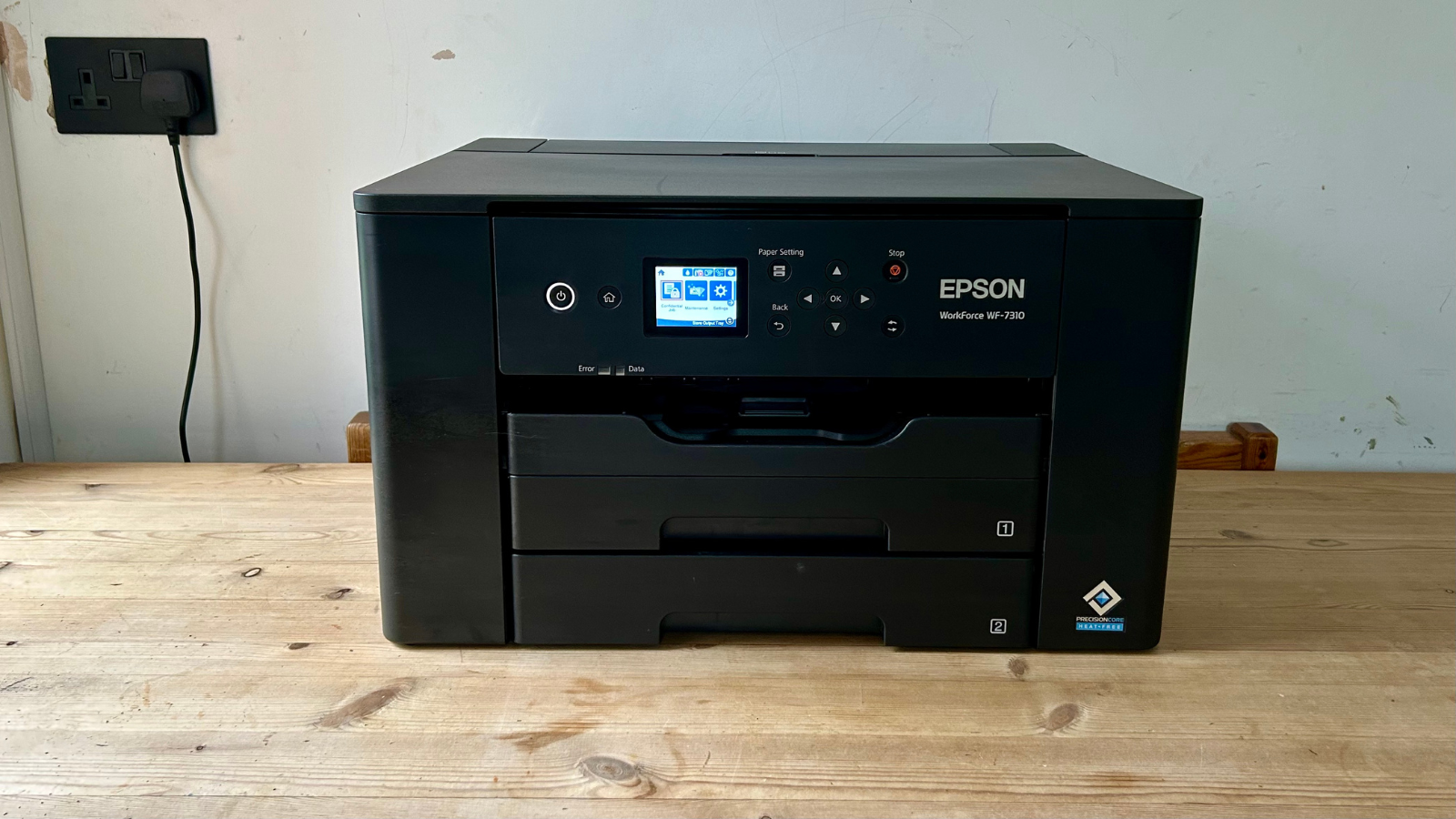
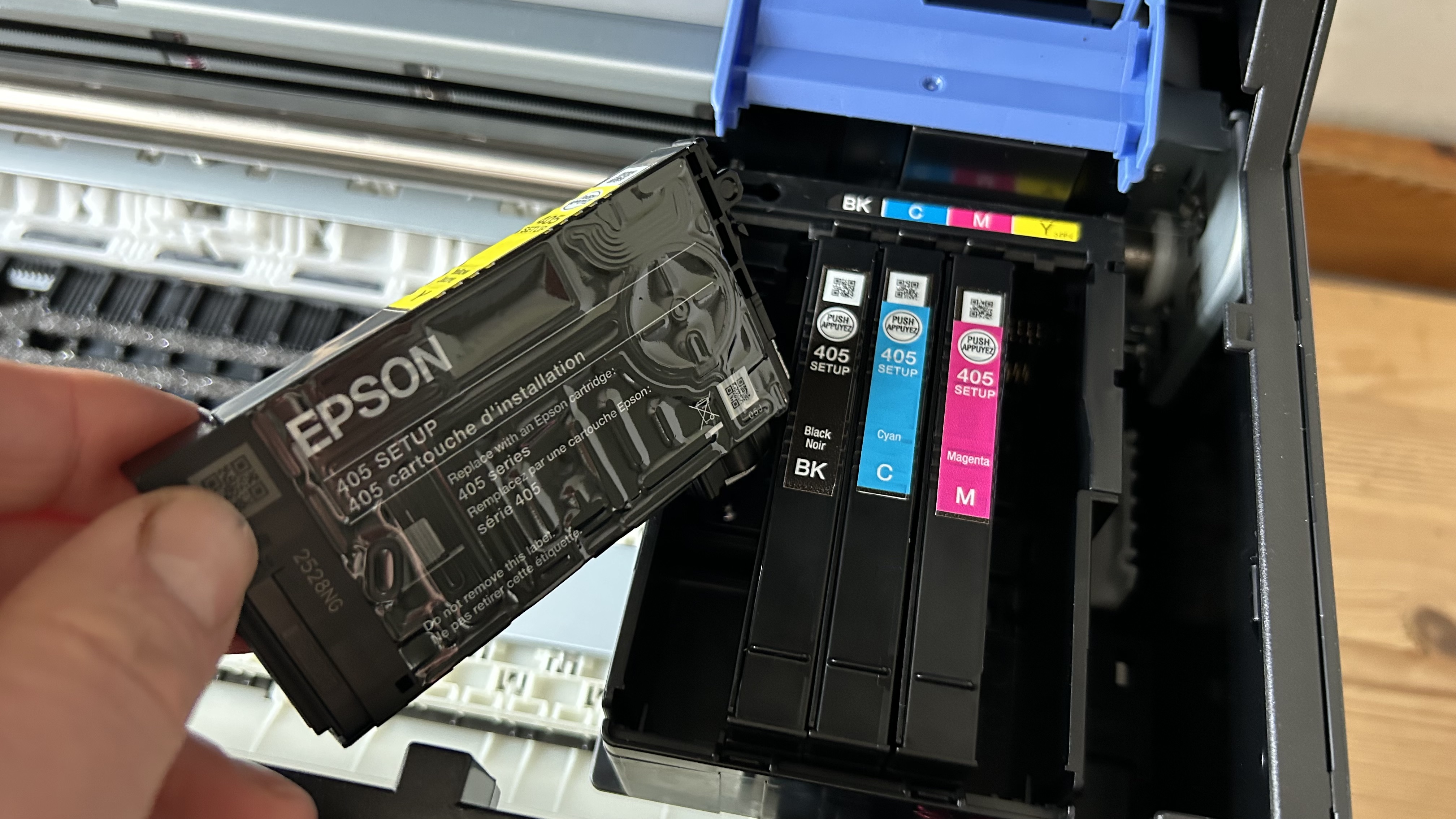
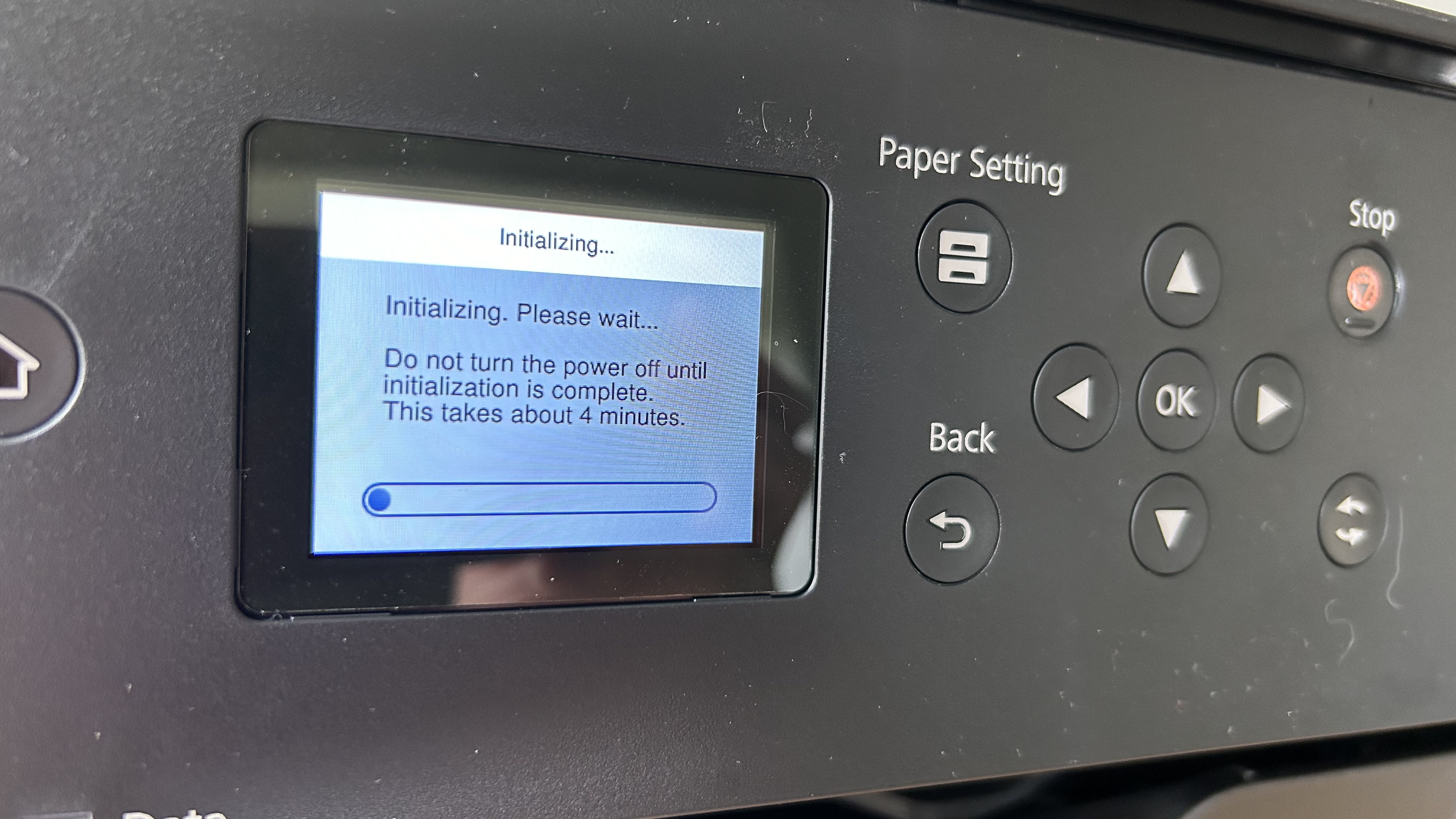

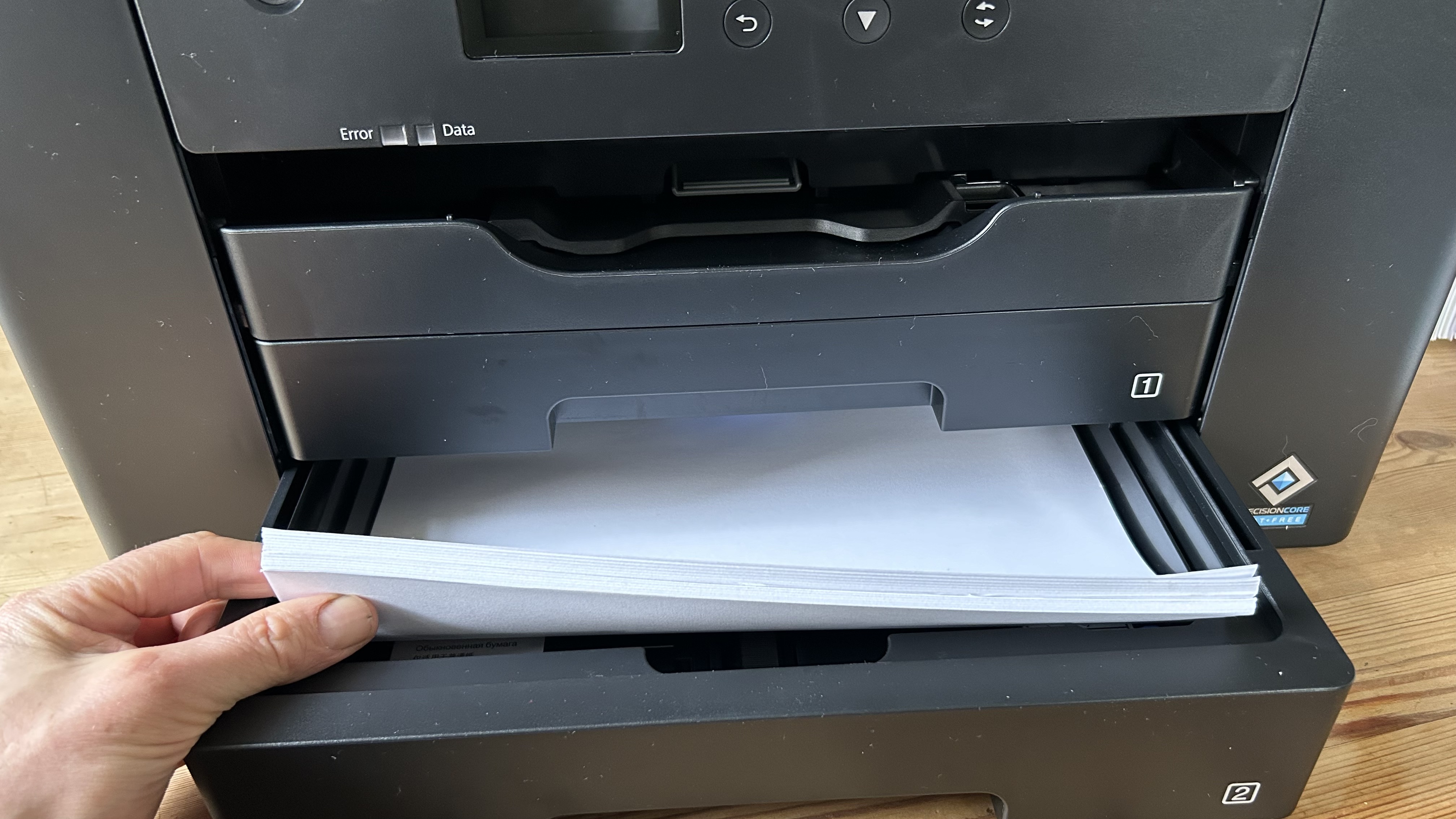
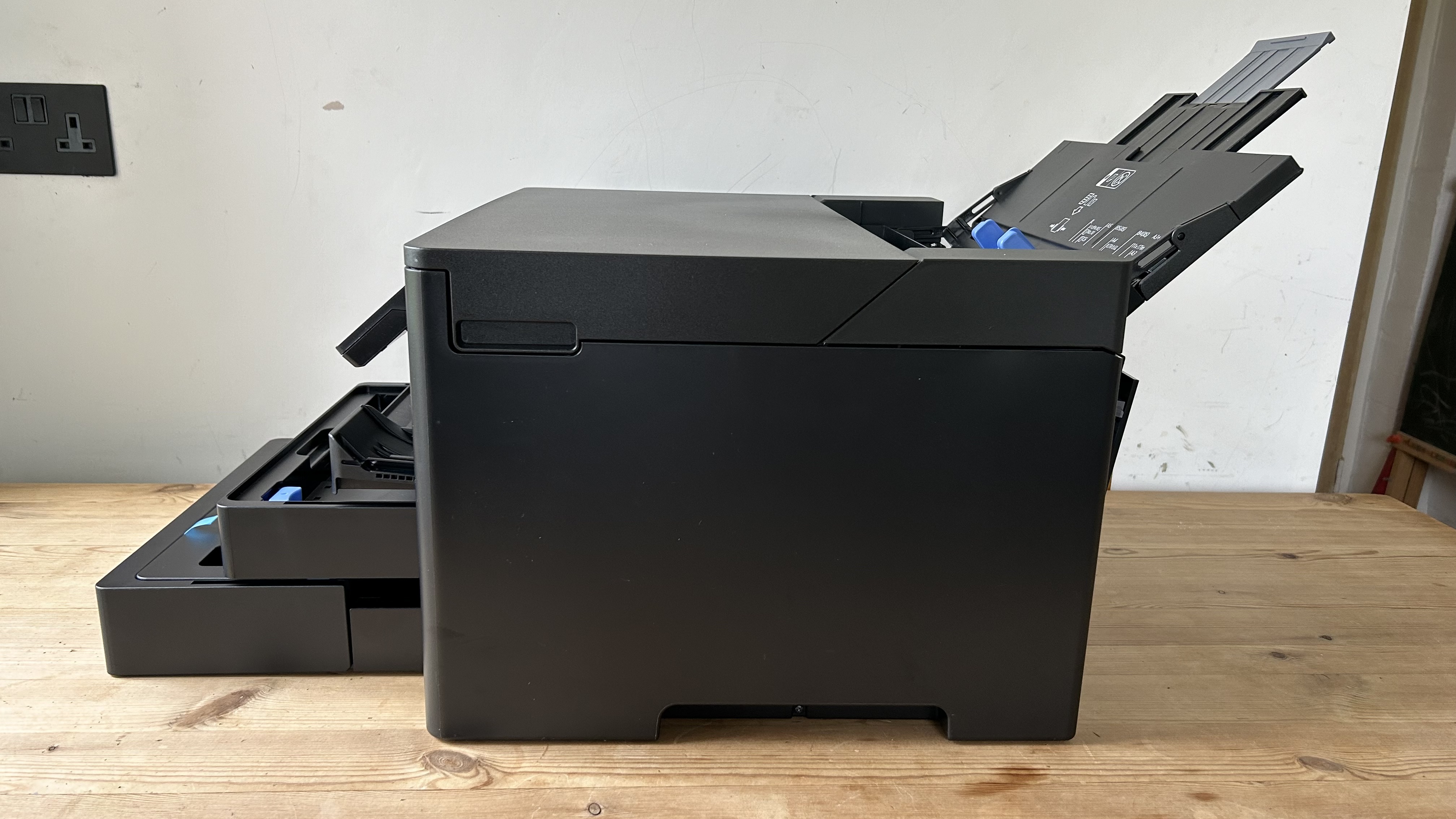
Specifications
Reasons to buy
Reasons to avoid
✅ You need to print documents of all sizes. This printer is equally adept at printing passport photos as it is A3+ posters.
✅ You print brochures and handouts that need to be vivid, long-lasting and smudge-resistant. Epson’s pigment-based ink is all of those things.
❌ Your print volume is very high. Epson’s DURABrite ink cartridges are expensive.
❌ You mostly print photos. It can print a reasonable photo, but the pigment inks are better at vivid documents. Photo printers tend to use soluble dye inks which are better suited to photo paper and are usually cheaper.
It might look a little bulky, but I found the Epson WorkForce Pro WF-7310 is actually quite compact considering it can hold a whole ream (500 sheets) of Tabloid/A3 paper in its two paper trays. Add a multi-purpose tray that can take pretty thick card and you’ve got a printer for the home office that can handle a heavy workload.
Under tests, I was impressed by its rapid print rate in auto-duplex mode and the print quality. It’s using pigment-based inks that give you bold colors and more durable prints. There’s no touchscreen on this model, but it’s easy enough to operate using the tilting control panel with its 6.1cm LCD. Wi-Fi and AirPrint connectivity are built in, while the motorised output tray is a nice touch. The only real catch is the cost of the DURABrite cartridges, which push the CPP (cost per page) over 12 cents (or 10 pence) for color pages.
Thanks to its specs, its speed, its print size capabilities, and its generous sheet capacity, this Epson gets my vote for best printer for the home and home office. A good all-rounder that impressed me during review.
Read our full Epson WorkForce Pro WF-7310 review
Best home printer for inkjet
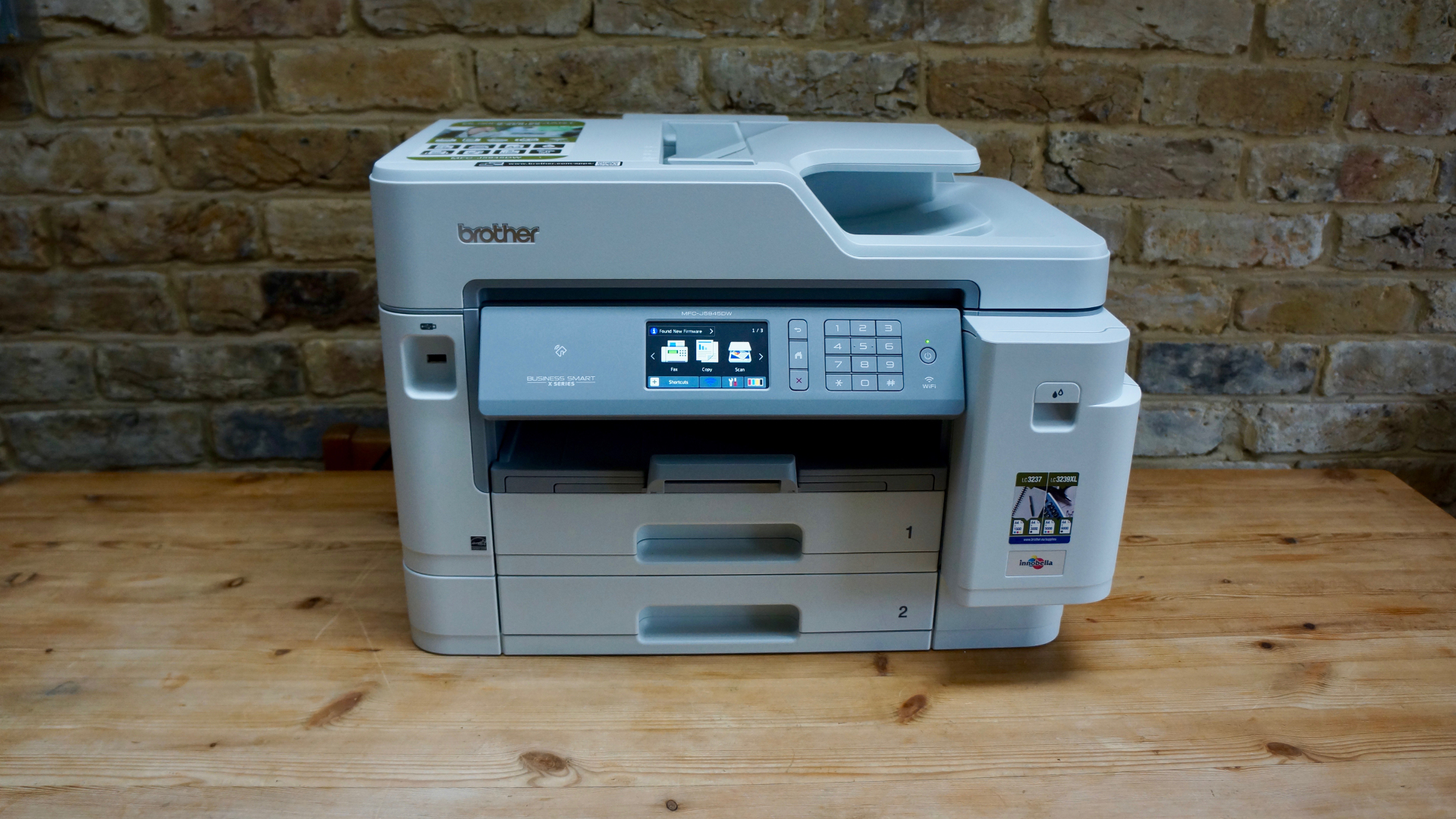






Specifications
Reasons to buy
Reasons to avoid
✅ You print photos as well as documents. This inkjet can handle both, which gives it an advantage over a laser printer.
✅ You print on a variety of paper stock. With multiple input trays and ample room in each, you can load it up with different paper sizes and select the desired type remotely.
❌ You need to copy large documents. Though it can print on Tabloid/A3 paper, the scanner is limited to Letter/A4 paper.
❌ You’re pushed for space. With its high paper capacity and bulging cartridge compartment, this 21kg printer is a big unit.
The Brother MFC-J5945DW is a high-spec feature-packed four-in-one business printer aimed at the home worker with heavy print demands.
It’s an inkjet, although it prints faster than some laser printers I've reviewed and it can take extra-large inkjet cartridges that promise a page yield up to 6,000, which is comparable to laser toner cartridges.
Thankfully, it’s smaller than a wide-format laser printer, and there’s room for 250 sheets of paper in its twin input trays. I was disappointed that the scanner is only Letter-sized, but apart from that limitation, this premium printer copies documents quickly and reliably with its 50-sheet ADF, while doubling A4 documents to A3-size if required.
This is a step-up from your average home office printer, but I found the print quality and broad feature set justify the price.
Read our full Brother MFC-J5945DW review.
Best home printer with guillotine
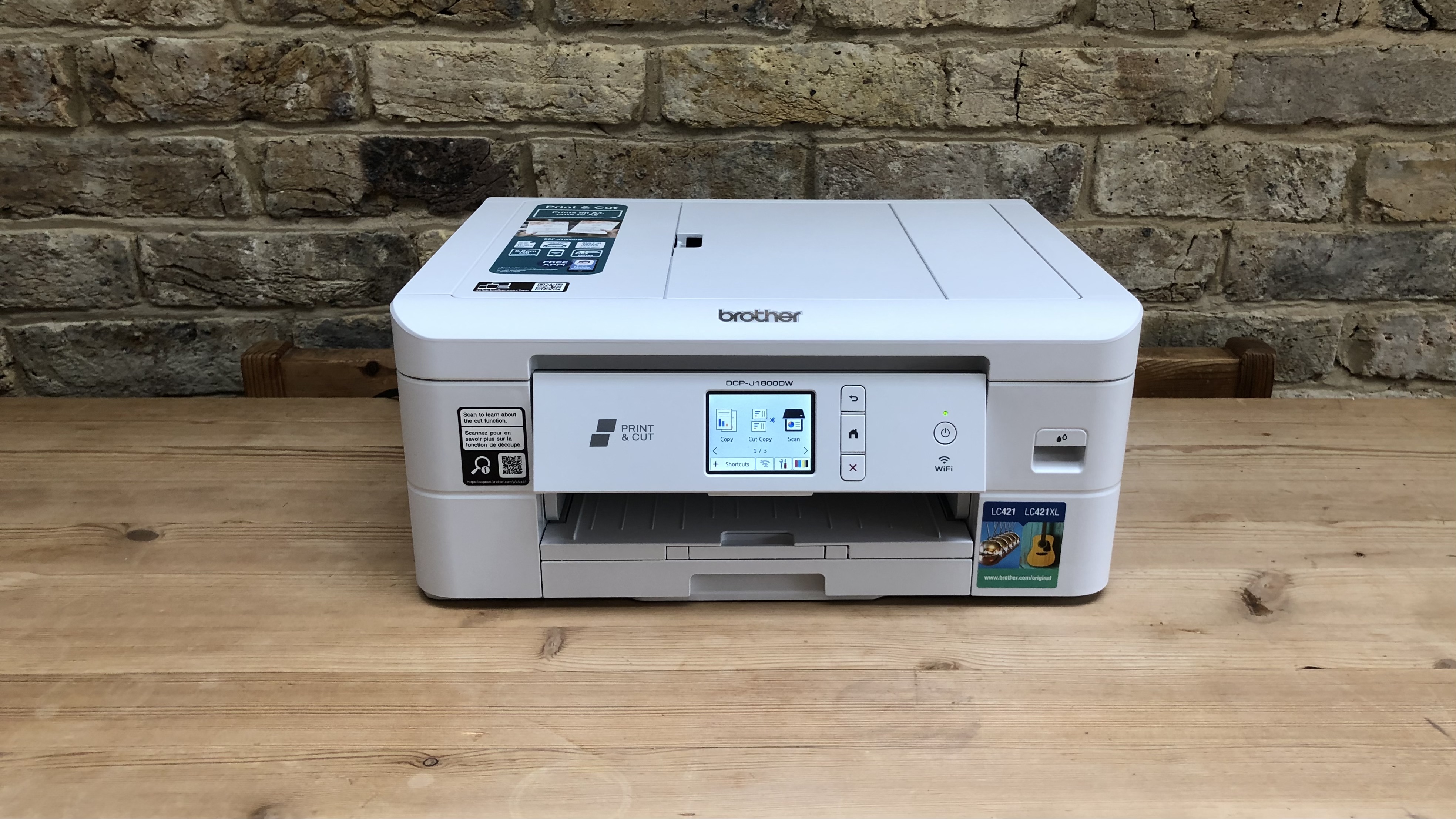
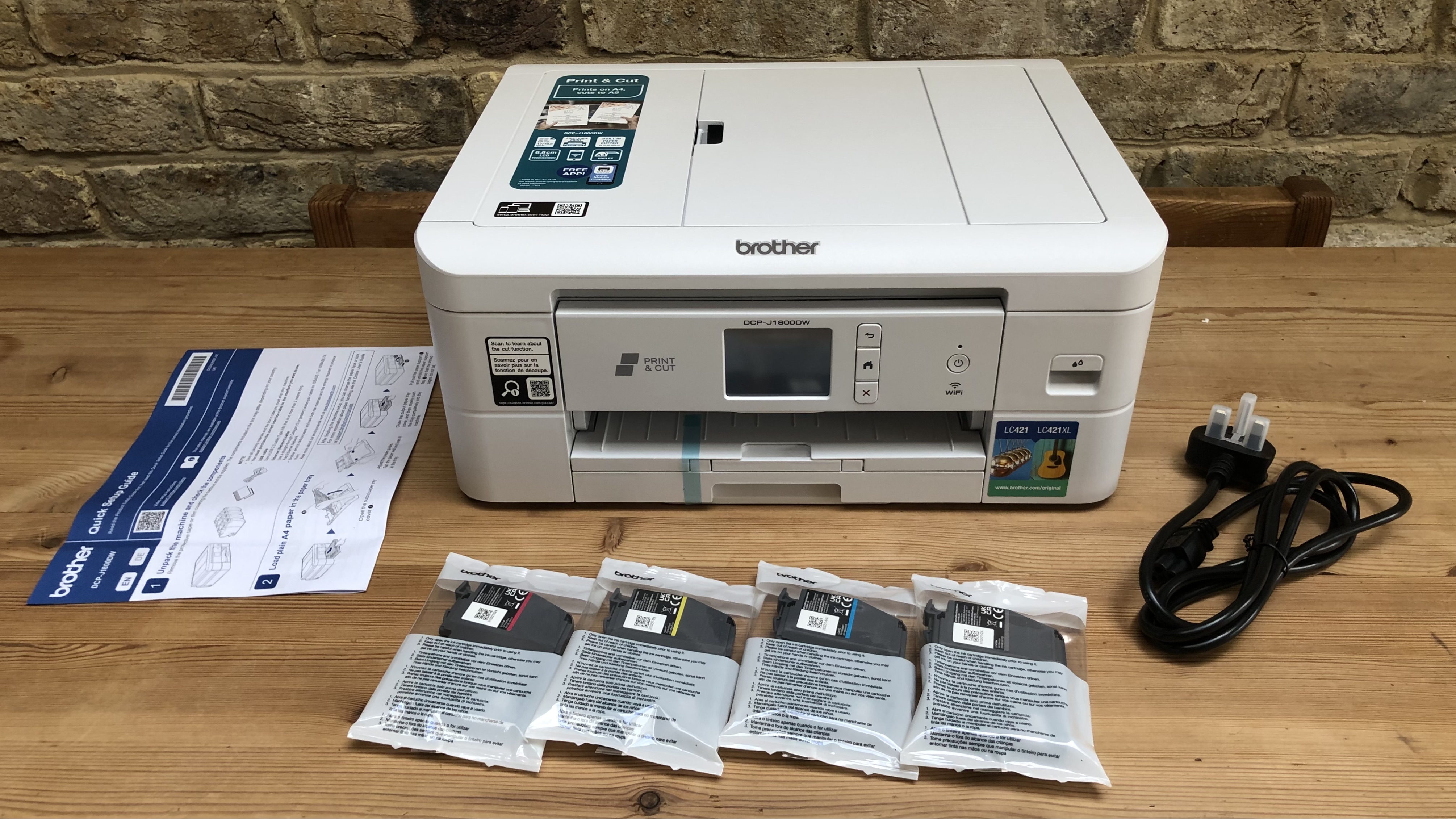
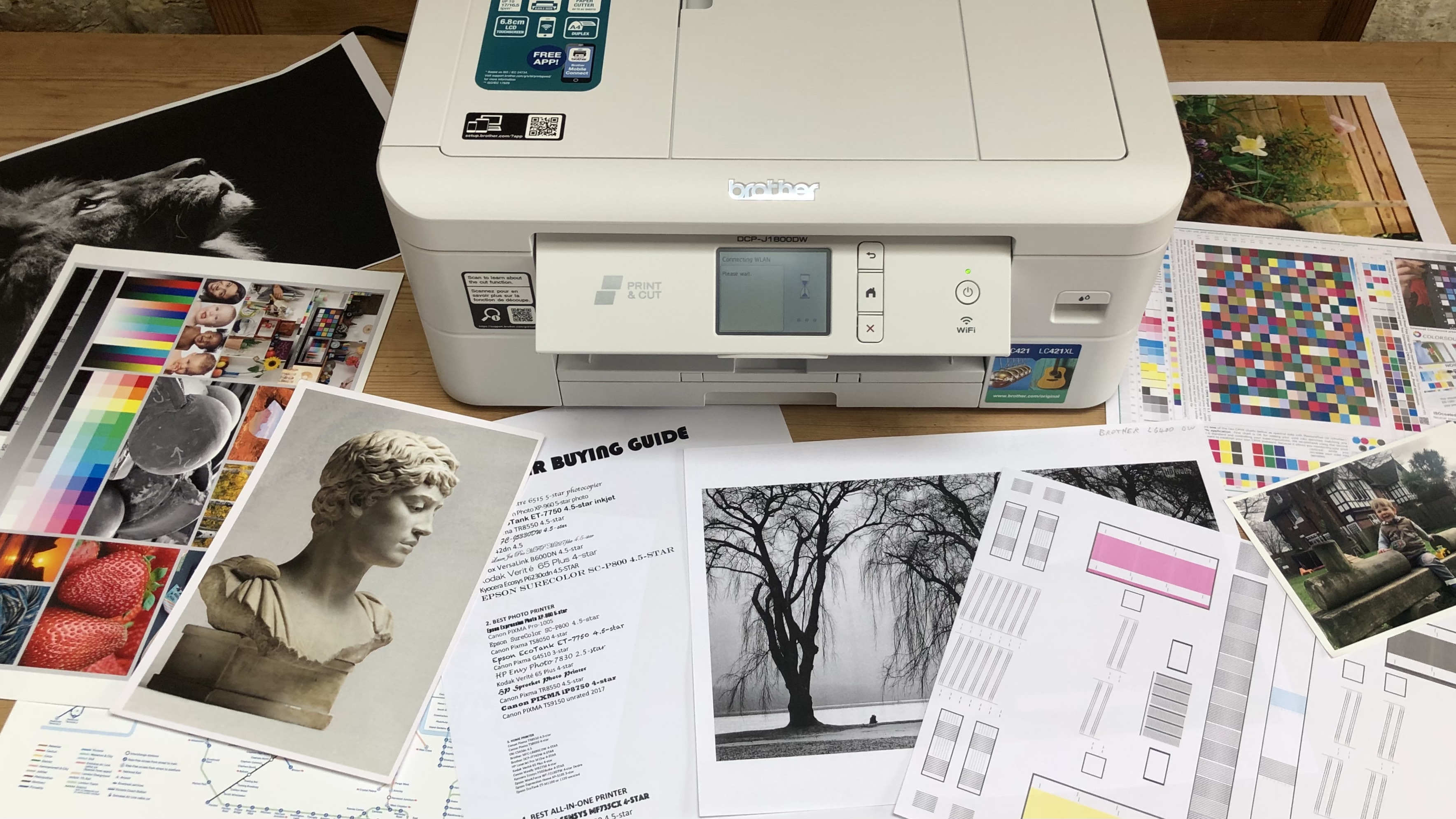
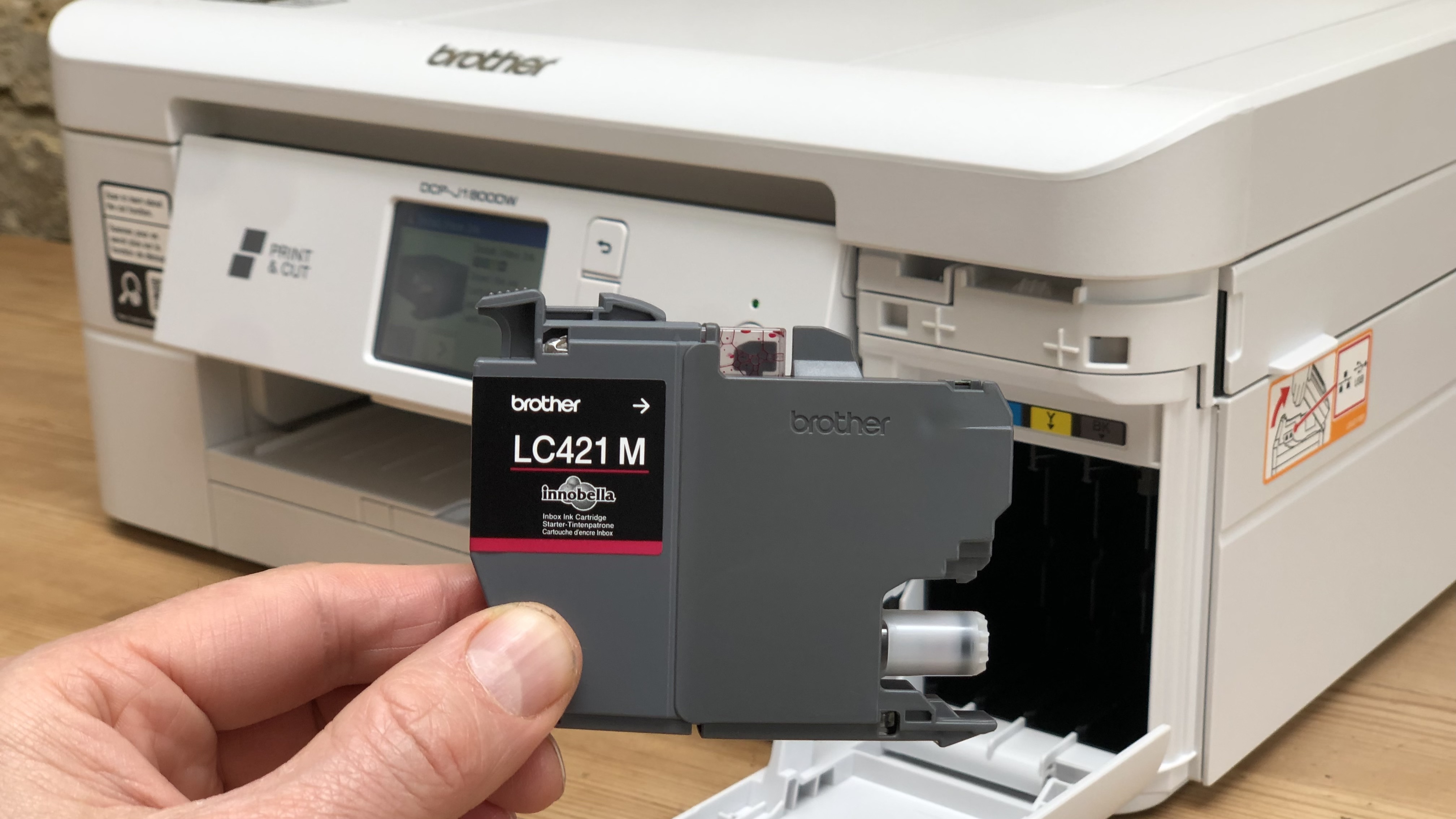
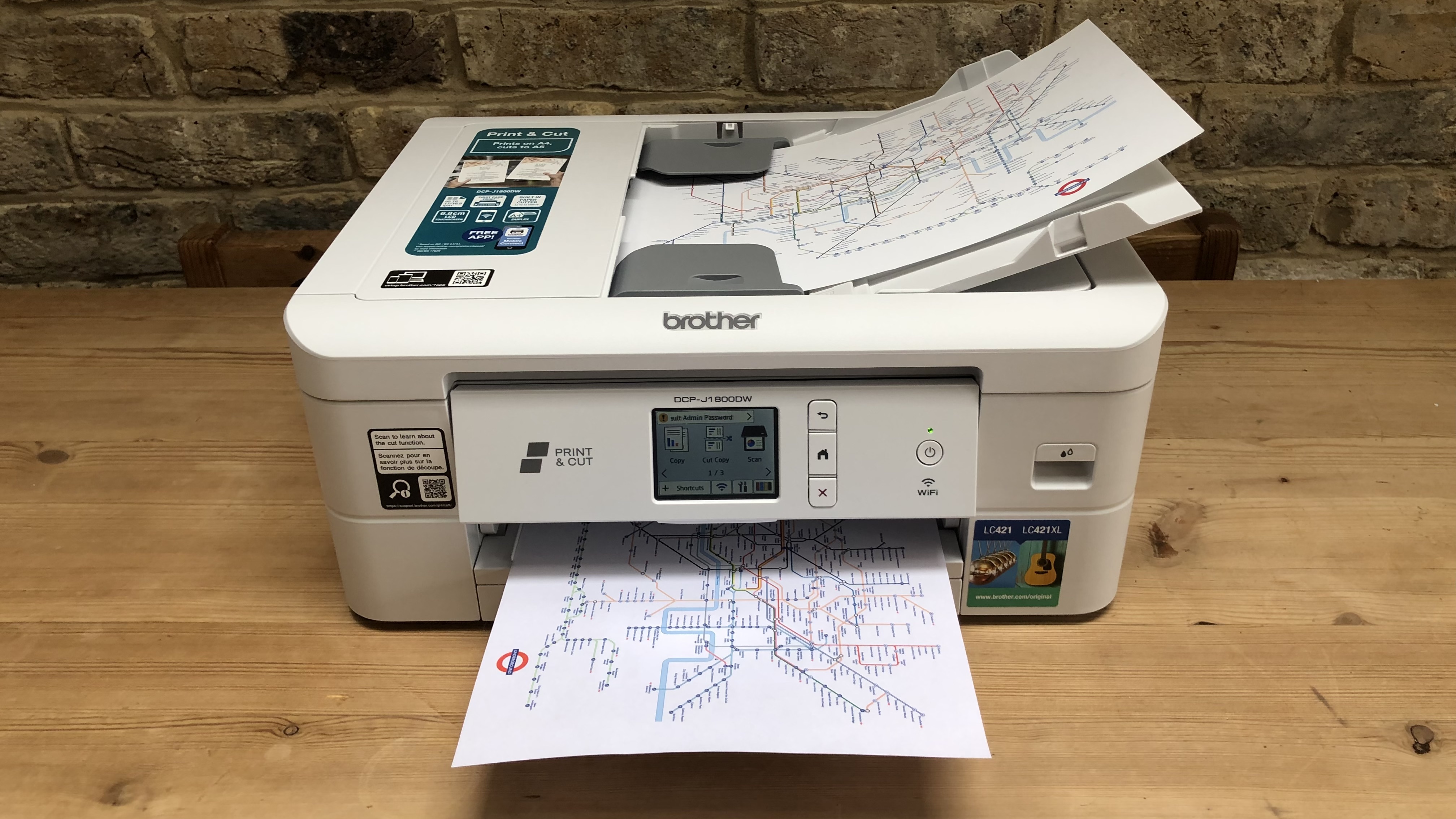
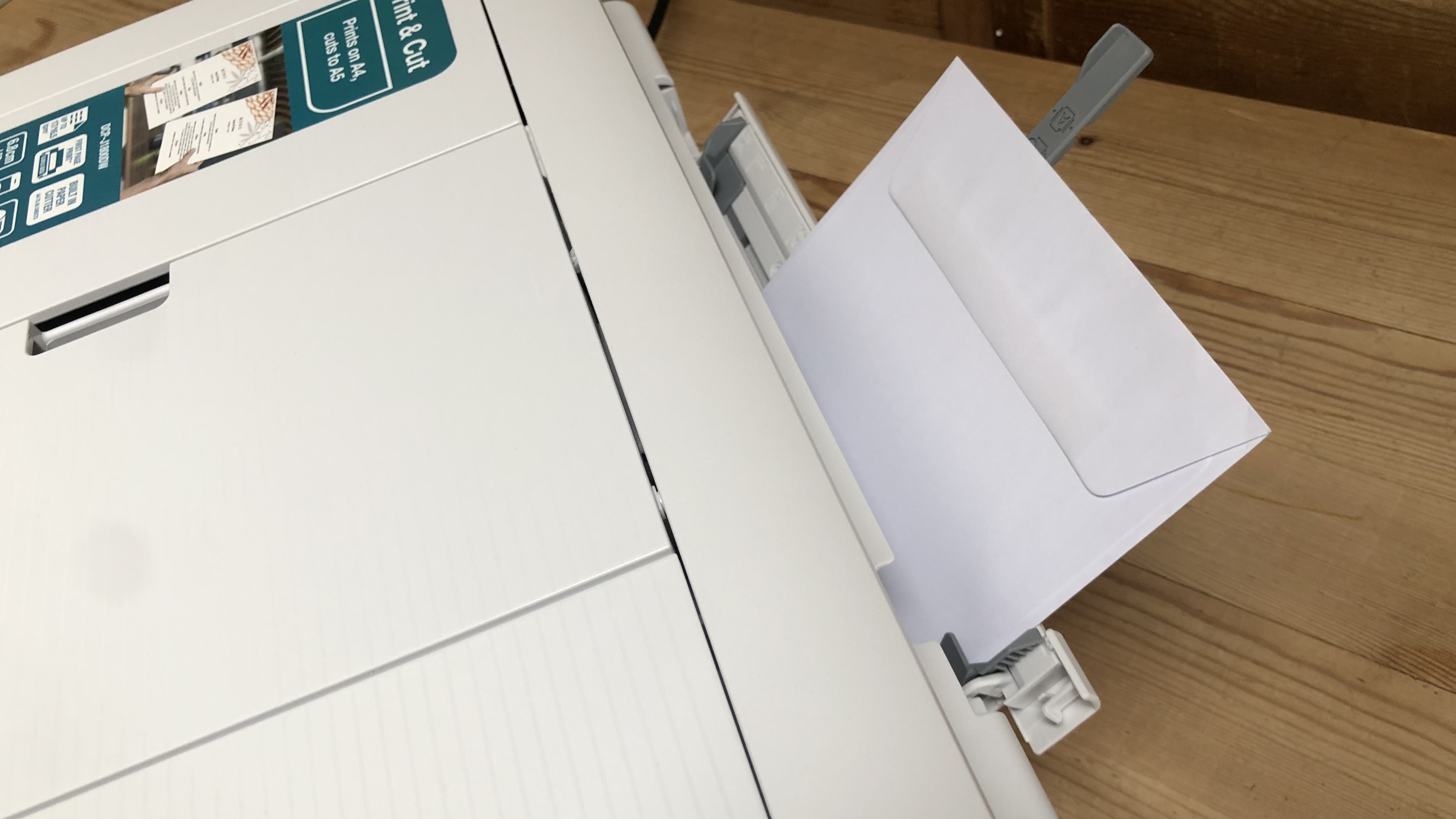
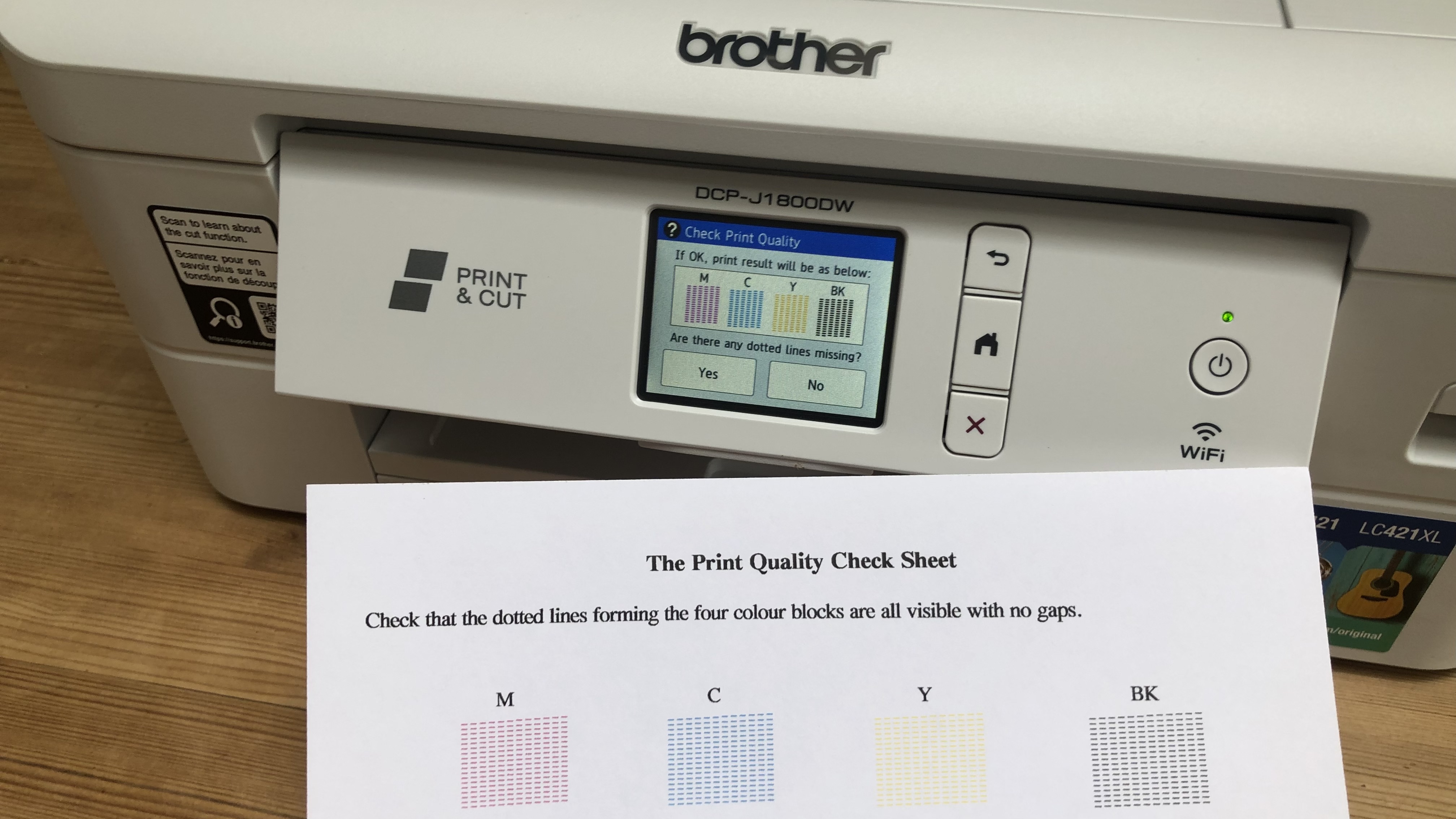
Specifications
Reasons to buy
Reasons to avoid
✅ You want to print handouts on A5 paper. With this printer you can print two simultaneously on one sheet of A4 and have the printer cut it in two.
✅ Your print demands are varied. This printer can handle any kind of paper up to Letter/A4-size, including photo paper.
❌ You’re sure you will never use the cutter. It’s a potentially useful feature that works well, but it does add moving parts and cost that you don’t need.
❌ You print a lot of pages. If you do, then a supertank printer makes more financial sense than a cartridge printer.
The Brother DCP-J1800DW is a compact all-in-one inkjet aimed at the small office, with an interesting extra feature — an inbuilt guillotine.
It’s the first printer of its kind to come armed with an internal blade for slicing Letter paper or dividing A4 into to two sheets of A5. This unique selling point could save significant time when it comes to printing handouts or flyers of varying sizes and I found the cuts were always precise.
But even if you never use the cutter, I found this is a good printer with all the key business features included. There’s a 20-sheet ADF for copying multi-page documents, wi-fi and both USB and Ethernet ports with neat cable management.
As a cartridge-based inkjet, the ink bill is always going to be a concern, but the print quality passed all of my tests, with both documents and photos. Unless you plan to print lots of pages, I have no reservations recommending this ingenious inkjet.
Read our full Brother DCP-J1800DW review
Best home printer for high-capacity

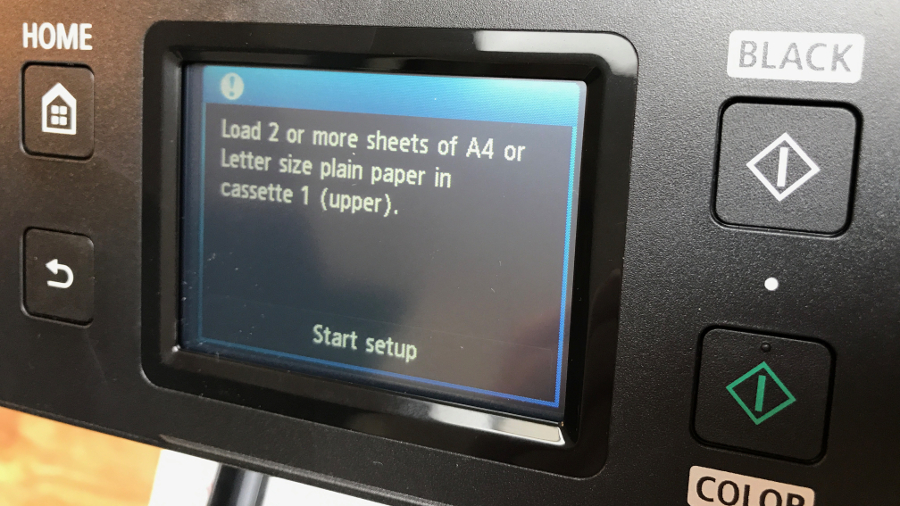
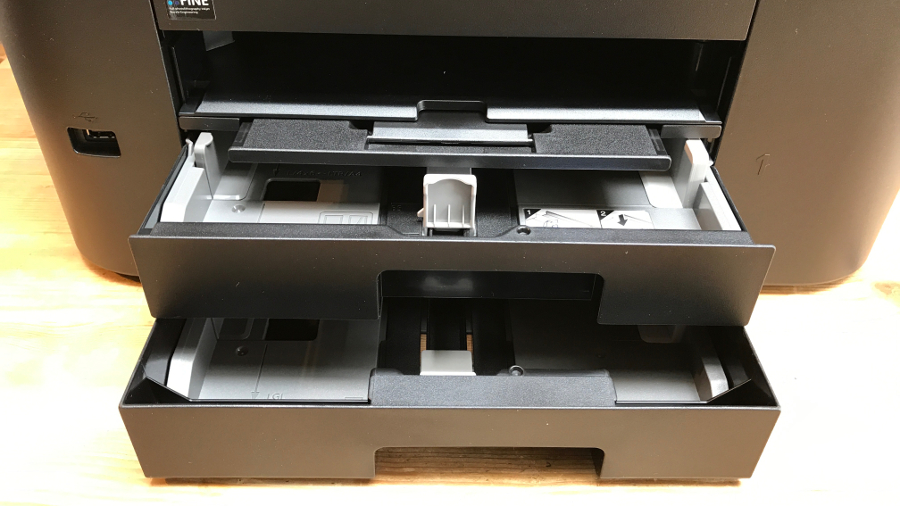
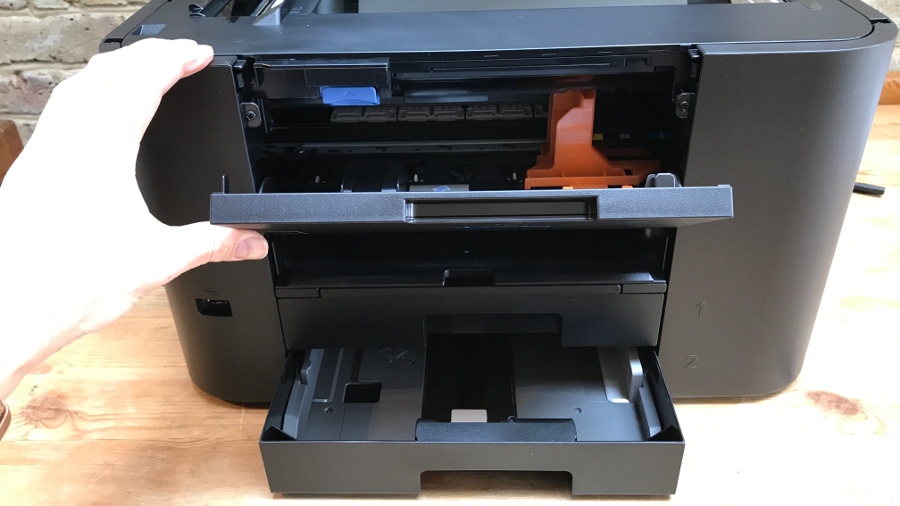
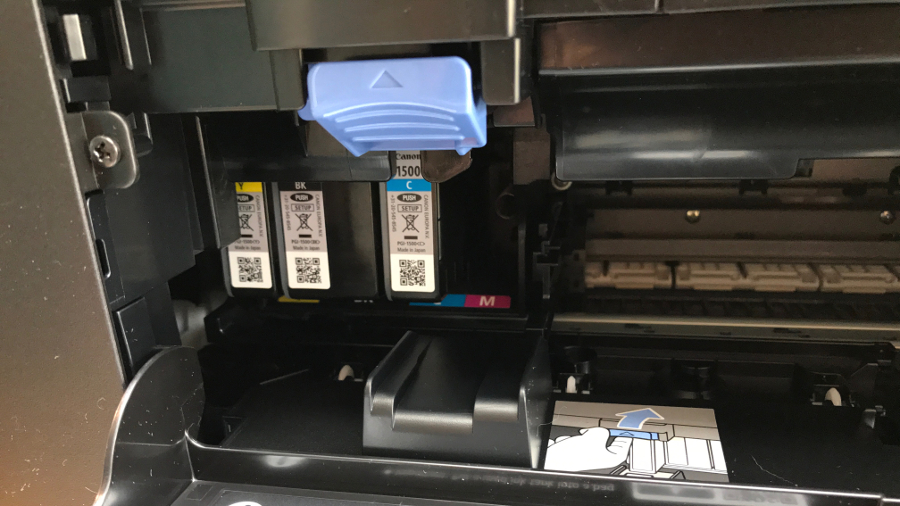
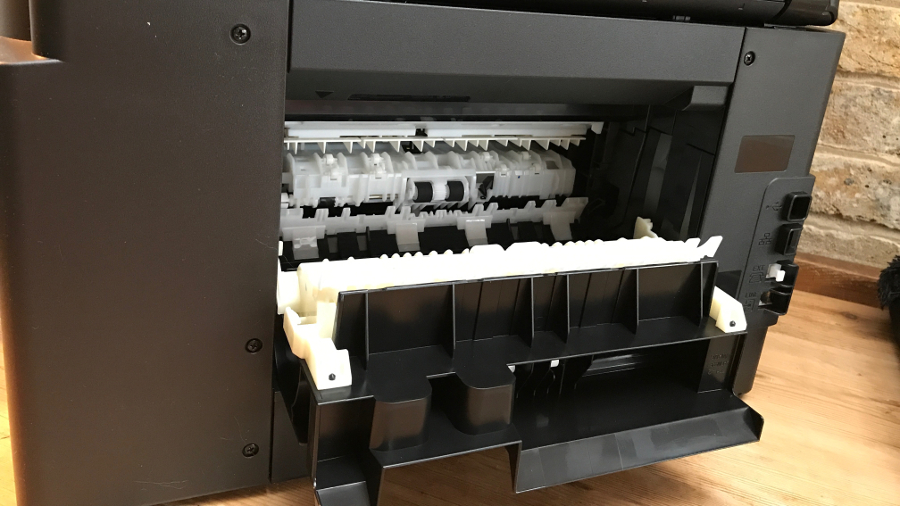
Specifications
Reasons to buy
Reasons to avoid
✅ You work from home and need a printer that can keep up. This 4-in-1 has all the essential business features, including a fax, and high paper capacity.
✅ You want to hide your printer away from your desk. With twin input trays and such a high capacity for paper, you shouldn’t have to keep jumping up to refill it.
❌ You don’t print very often. This printer is designed for moderately high-volume printing and if left unused for a long period, the print heads are liable to dry out and clog.
❌ Your print output is very high. Being a cartridge inkjet, the cost per page is significantly higher than an ink tank inkjet, or a laser printer, so you should look at those options first.
It’s not small, but if you can fit this four-in-one printer in your home or home office, all your printing, scanning and faxing needs will be taken care of.
Between its two paper trays, the MB2750 can accommodate a whole 500-sheet ream of A4 paper and churn out duplex pages at a remarkable rate, for an inkjet. In my own print tests, it proved to be a real all-rounder when it came to the print quality assessment, with both color and monochrome documents looking consistently clean and crisp. It even makes a decent post of photo printing, which is not the priority for a business printer.
The 50-sheet automatic document feed is great for large photocopying jobs and I found it refreshingly easy to access its many features via the logical touchscreen interface.
Read our full Canon Maxify MB2750 review
Best home printer for wide-format printing
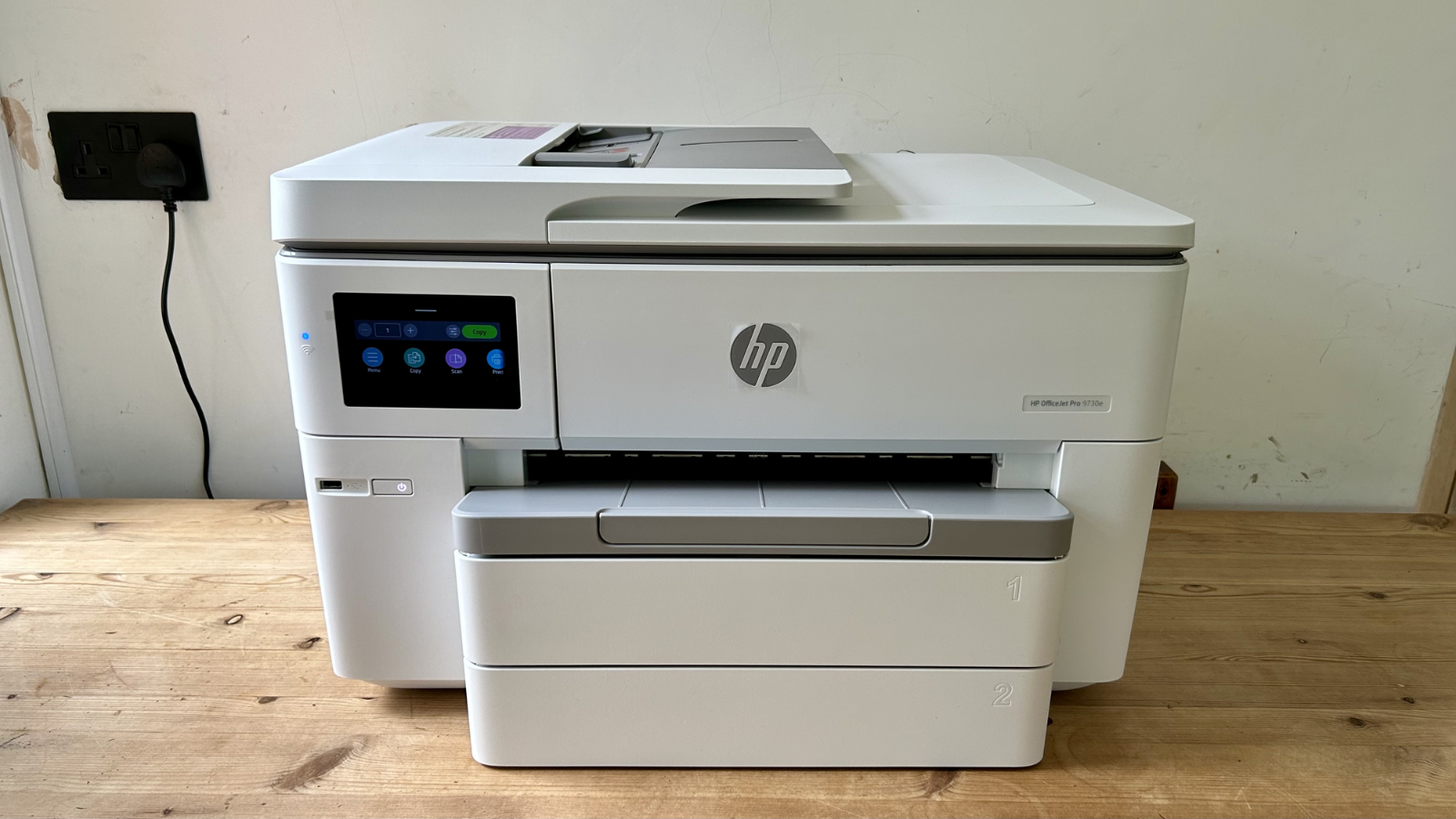
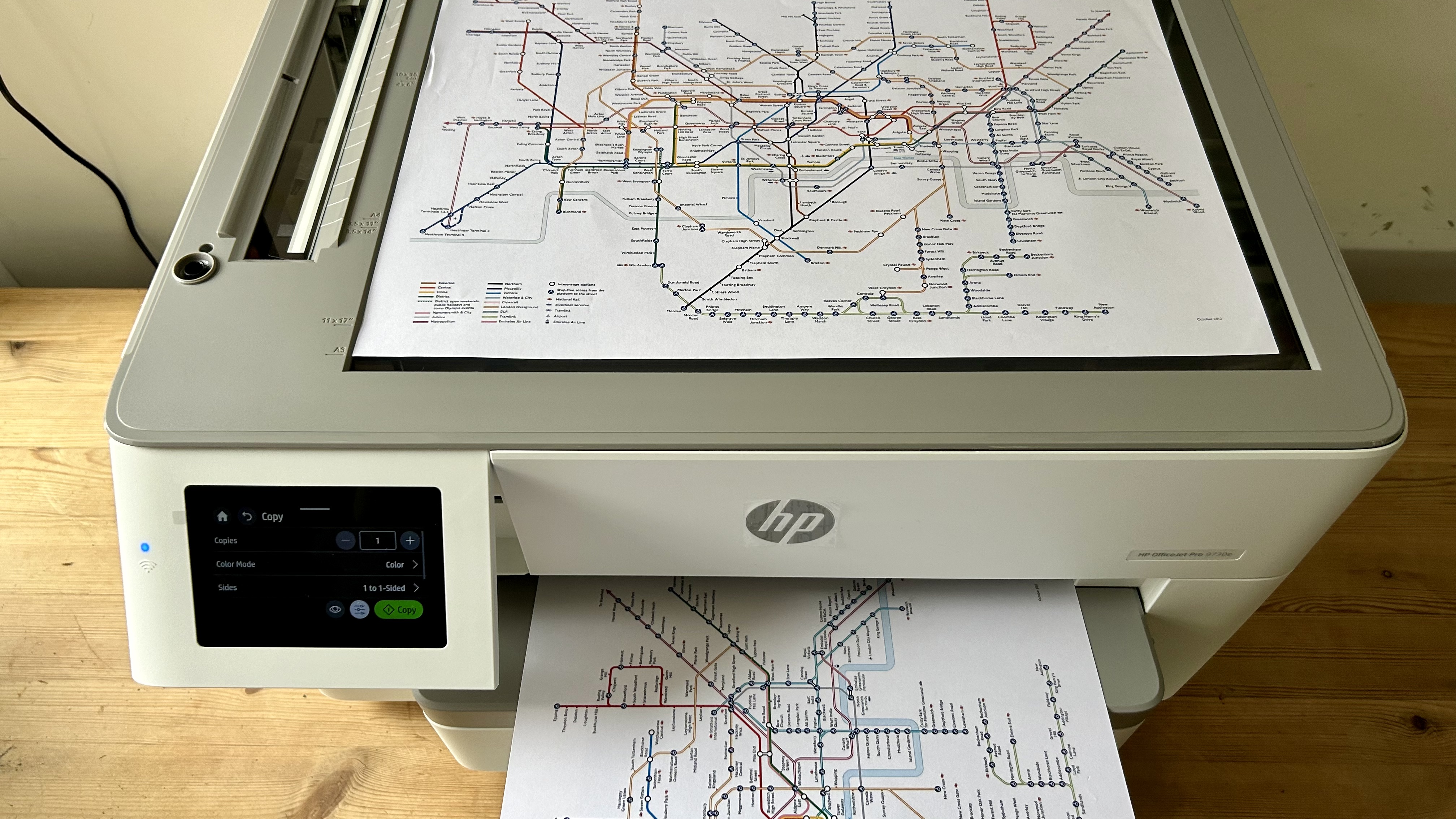
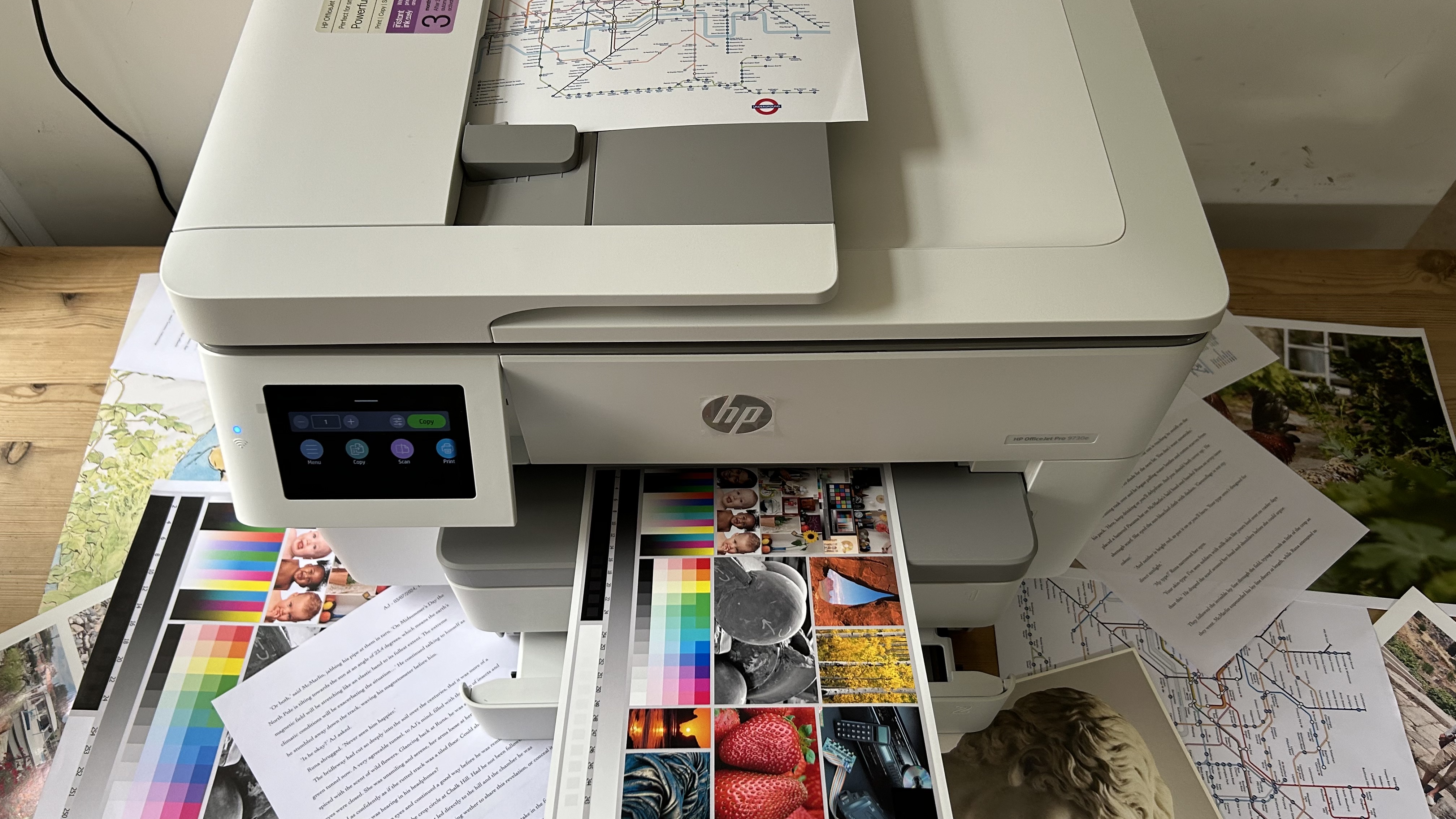
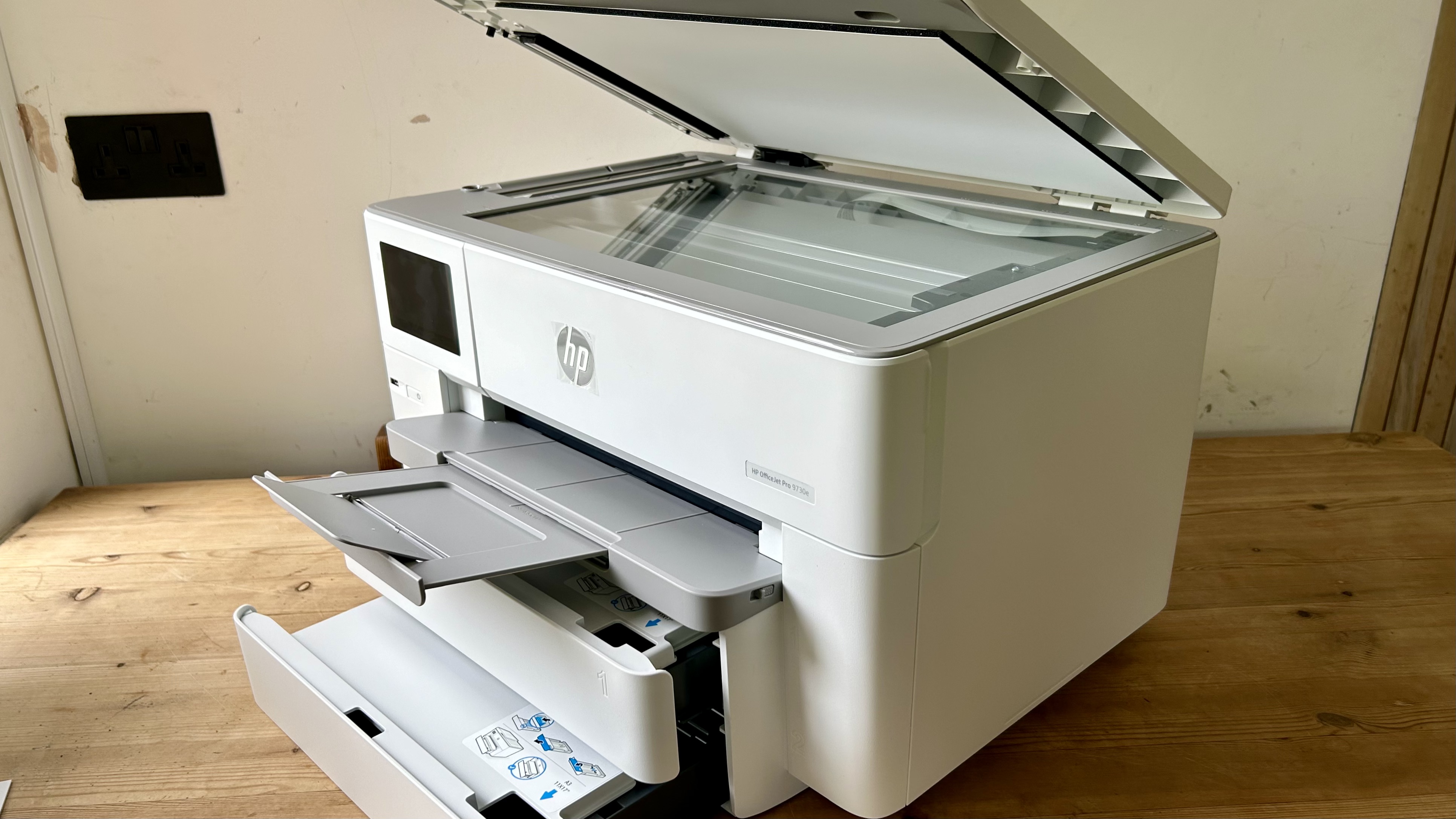
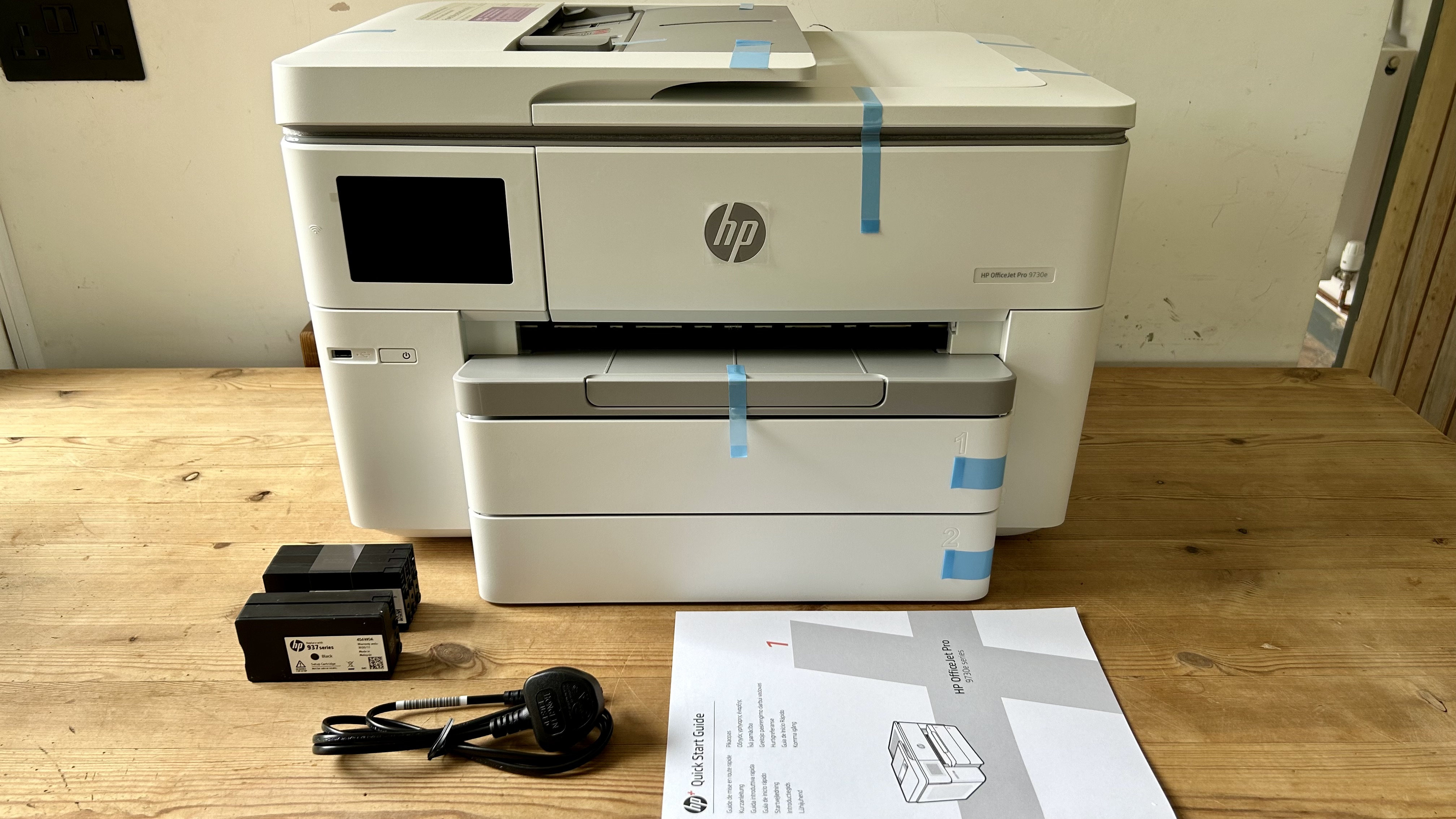
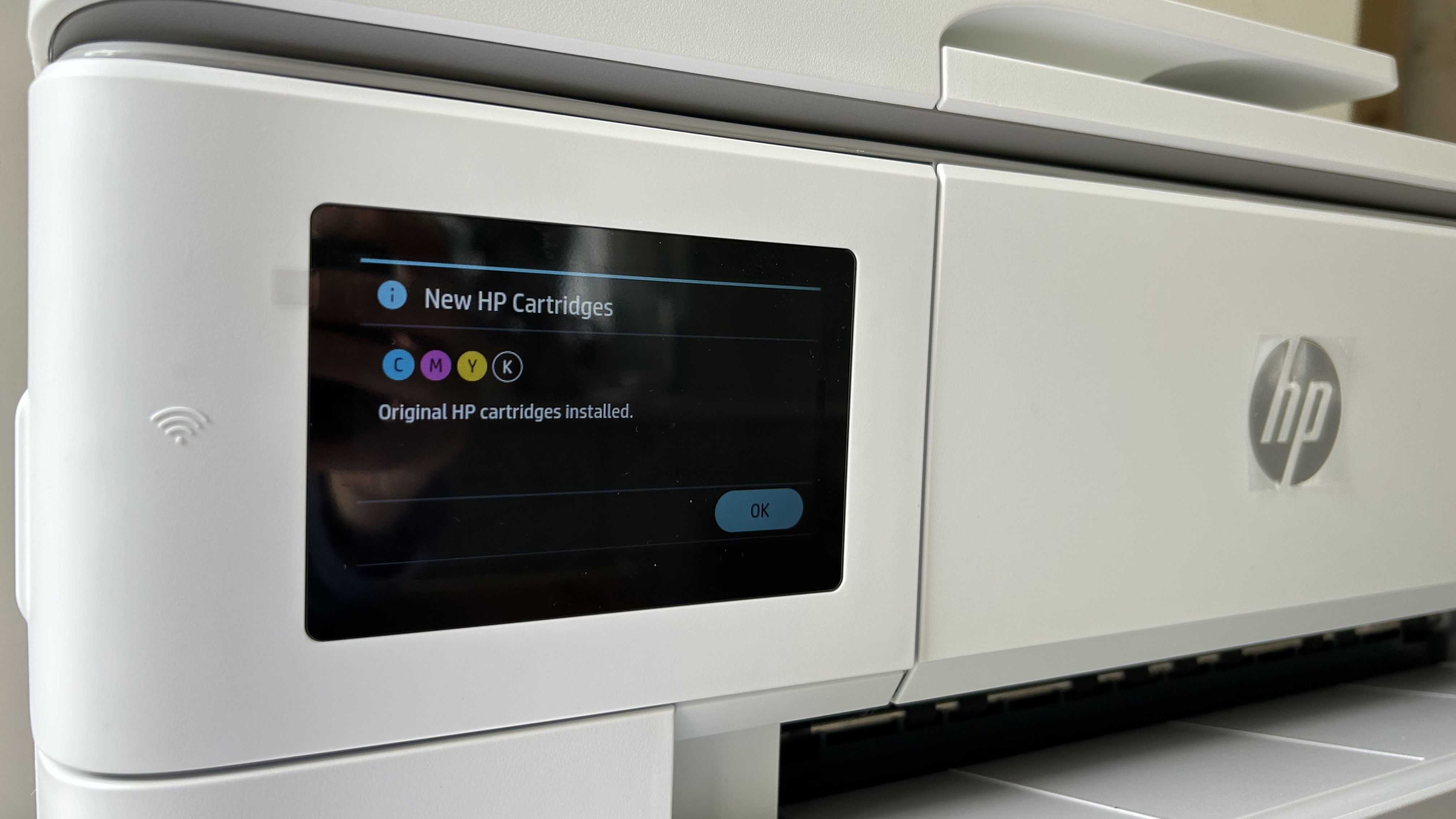
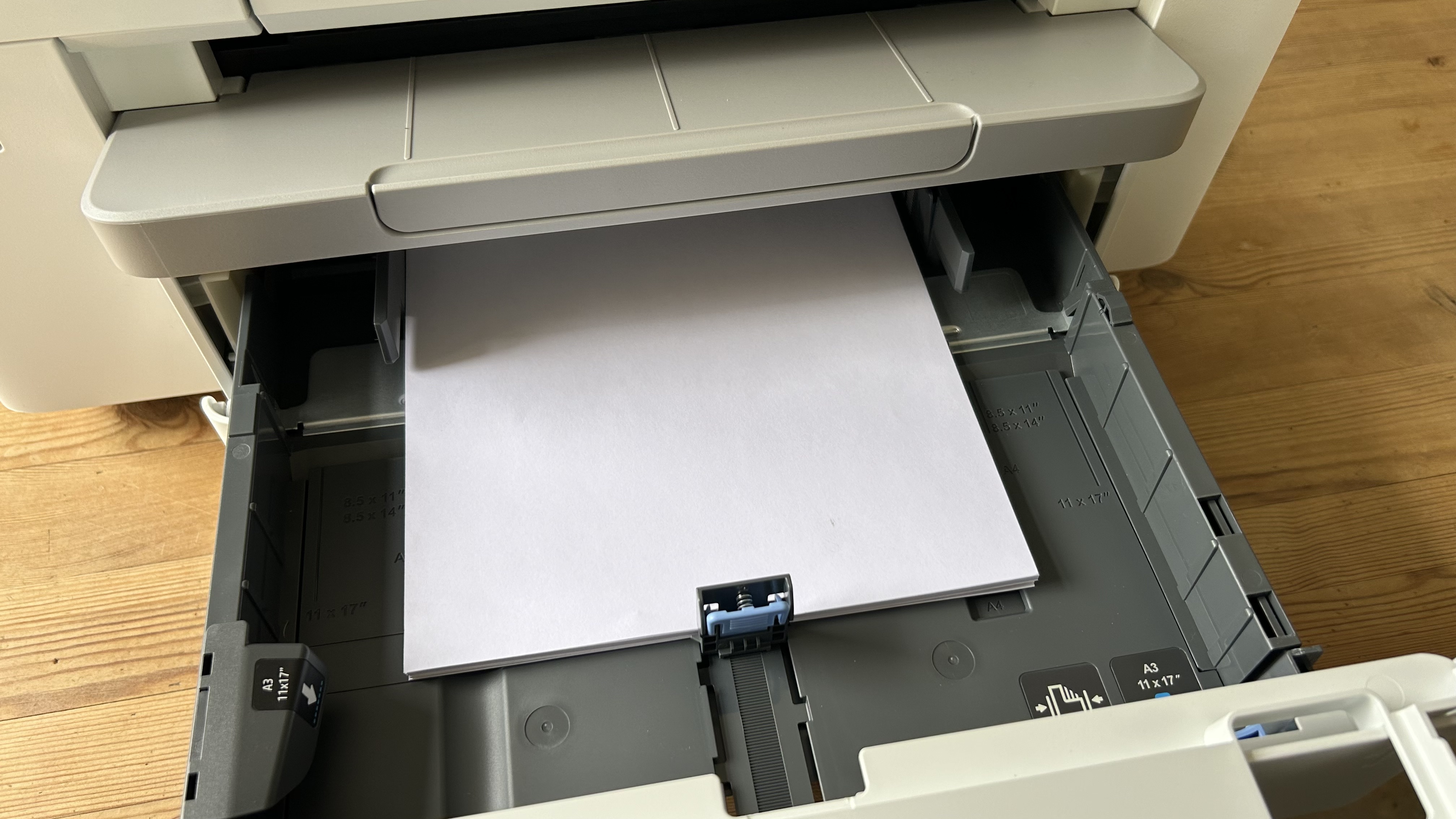
Specifications
Reasons to buy
Reasons to avoid
✅ You need to print on multiple paper sizes. With twin input drawers, you can fill up with regular Letter paper and larger Tabloid sheets at the same time.
✅ You need to print quickly. For an inkjet, the print speed is pretty fast and it can print both sides of the page automatically.
❌ You plan to print on thick paper or card. The recommended weight limit is just 105 g/m² which is pretty thin paper.
❌ Your home office is small. Even for a wide-format printer, this one is large, so you won’t want it on your desk.
As large format multifunction printers go, the HP OfficeJet Pro 9730e is a well-specified office inkjet at a competitive price.
I explored everything this home printer offers, finding plenty of room for paper (500 sheets) in its twin trays and there’s a 35-sheet automatic document feed for copying multiple A4-sized documents. The print rate of 22ppm (pages per minute) is impressive and essential features such as dual-band Wi-Fi, AirPrint and HP’s Wolf Pro Security are included.
I found it easy to use thanks to the large 4.3-inch capacitive display and a very intuitive companion app. Of course, the catch with any cheap cartridge-based printer is the cost of the ink, which is not so competitive. I discovered that it can’t handle card, or paper that’s at all creased or dog-eared. Apart from that fussiness, I reckon it would work well in a home office.
Read our full HP OfficeJet Pro 9730e review
Best home printers: Also tested
I've tested more than 200 of the best printers for home and office use - and while they may not make my full round-up, the models below warrant honorable mention.
HP OfficeJet Pro 9015
This all-in-one printer offers fast printing speeds, automatic document feeding, and smart features such as mobile printing and scan to email. It's also energy efficient, earning an Energy Star certification.
Epson WorkForce WF-110
One of my favorite portable printers, it might be slow to print, but it's versatile, can be charged on the go via USB, and the crisp quality of prints are uniformly excellent.
Brother MFC-L8395CDW
The Brother MFC-L8395CDW (also known as the MFC-L8390CDW) is a laser printer boasting rapid print speeds, essential office-based features like auto-duplex printing, and built to tackle high-volume print runs.
Epson EcoTank ET-2850
It might be a bit basic for some, lacking a few key features I like to see on printers I review, and the print quality is just ok. However, the Epson EcoTank ET-2850 is an efficient device that delivers great cost-per-page.
Brother HL-L8245CDW
This laser printer, also known as the HL-L8240CDW, is a serious workhorse that features all the essentials required for higher volume print jobs, including speedy auto-duplex printing, touchscreen, NFC and USB Host port. But there's no scan, copy, or fax facilities here.
Canon Color imageCLASS MF753Cdw
Also known as the i-SENSYS MF754Cdw, the Canon Color imageCLASS MF753Cdw is an ideal pick for heavier print runs, particularly for SMBs and home offices. However, I did find that running costs weren't exactly competitive, and it lacks core features like NFC.
Best home printer: FAQs
What are the best printer brands?
There are ten big printer manufacturers that have won prestige and market share through consistent innovation and reliable products, plus a few emerging names of note. Epson and Canon are two of the largest inkjet manufacturers, while Xerox and Lexmark specialise in laser printers. HP and Brother continue to develop both technologies and like the aforementioned brands, they sell printers for both work and home use. Brands like Kyocera, Oki, Ricoh and Konica Minolta are not such familiar household names, but they’re big players in commercial printing. In areas where print technology is changing rapidly, such as fabric and 3D printing, new brands including Procolored, Sawgrass and Creality are the ones to watch. For more like this, we've tested out all the best 3D printers.
What is a home printer?
A home printer is a device designed for personal use in a home setting, typically for printing documents, photos, and other materials. Home printers are typically smaller and more compact than the best workgroup printers and are intended for low-volume use.
What are the different types of home printers?
There are several types of home printers available, including inkjet printers, laser printers, and multifunction printers. Inkjet printers use liquid ink to create prints and are good for printing photos and color documents. Laser printers use toner to create prints and are good for printing text documents and graphics. Multifunction printers combine the capabilities of a printer, scanner, copier, and sometimes a fax machine in one device.
For some recommendations, we reviewed the best inkjet printers, best ink tank printers, and the best laser printers.
How do I maintain my home printer?
To maintain your home printer, you should regularly clean the printer, replace the ink or toner when necessary, and make sure the printer is not overcrowded with paper. You should also keep the printer in a dust-free environment to prevent debris from clogging the machine.
What is the cost of ink or toner for home printers?
The cost of ink or toner for home printers can vary significantly depending on the printer and usage. Some printers have high-capacity ink or toner cartridges that last longer and can save you money in the long run, while others have smaller cartridges that need to be replaced more frequently. It is important to consider the cost of ink or toner when choosing a home printer, as this can be a significant ongoing expense. Some companies offer subscriptions or bulk purchasing options to help reduce the cost of ink or toner. It is also a good idea to shop around and compare prices from different retailers.
What’s the best ink, pigment or dye?
Inkjet printers use two kinds of ink to suit different situations. Pigment inks contain colored particles in suspension. The non-soluble particles bond quickly with the paper leaving bold prints that are less prone to smudging, running or fading under UV light. Pigment ink works well with smooth high-quality paper and is ideal for text documents. With dye-based inks, the colorant is in solution so it needs to soak into the paper and the prints are more susceptible to running and less UV resistant. Dye works well with cheap paper and also coated photo paper thereby making it ideal for photos. Many inkjet printers use both black pigment ink and colored dyes in combination.
Which home printer has the cheapest ink?
The home printer with the cheapest ink will depend on a variety of factors, including the type of printer (inkjet or laser), the brand, and the type of ink or toner it uses. In general, inkjet printers tend to have cheaper ink than laser printers, but the cost can still vary widely. It's a good idea to compare the cost of ink or toner for different printer models before making a decision.
How long do home printers last?
The lifespan of a home printer can vary depending on the brand, model, and how it is used. Some printers may last for several years with proper maintenance, while others may have a shorter lifespan. It's important to consider the overall cost of ownership, including the cost of ink or toner, when deciding whether to purchase a printer for home use.
What are the different types of printer?
There are three main types of printer: inkjet, laser, and ink tank.
Inkjets are all-rounders using liquid ink for high-quality text, graphics and especially photos. They're your classic home printer, although there are plenty of office inkjets out there. They're small, simple to use, For low-level printing jobs, they're perfect. The printers are cheap to buy, but the high price of ink cartridges make it more expensive long-term.
Laser printers use toners, providing crisp, detailed documents - they're a mainstay of offices. Instead of using liquid ink, lasers use a powder that's heated on the page. As a result, print speeds are faster - more ppm the better. They don't tend to handle photos as well as an inkjet, they're expensive to buy but the replacement toner is cheap, so they're a long-term investment,
Ink tank printers, like laser printers, the initial cost is higher - but they offer a lot of bang for their buck. Like an inkjet, it uses liquid ink in bottles, letting you refillable individual colors as you use them. This leads to reduced running costs and reduced waste. While ink cartridges last for a few hundred pages, ink tank printers can print thousands of pages before needing to be refilled. The overall economical choice.
But these are far from the only printers on the market, as we saw in our guide Inkjet vs Laser vs LED: What’s best for you? The category is incredibly diverse. In our experience, there's always a way to print almost anything - the difference mostly comes down to the type of inks or dyes used.
How to choose the best printer for you
When choosing which printer is best for you, there are a number of factors to consider:
Inkjet or laser?
If you print photos, the answer is inkjet. With thousands of nozzles applying liquid ink dots onto plain or coated paper, inkjets achieve superior image quality, while being generally smaller and cheaper than lasers. However, the dry toner used by laser printers is more efficient and allows for faster, cleaner and more consistent printing at higher capacities.
Monochrome or color?
If you don’t need to print in color, monochrome laser printers are significantly cheaper to buy and run than their color counterparts. They’re also simpler and have more space for higher capacity black cartridges. The same cannot be said of inkjets which are able to deliver all colors via the same printhead, so there’s little advantage in having just one.
Print-only or multifunction?
The essential difference between a pure printer and an MFP (multifunction printer) also known as an AOI (all-in-one) is the integrated scanner. Naturally, this feature adds size and cost, but a flatbed scanner will capture documents more satisfyingly than an app on your smartphone and it effectively turns any printer into a photocopier. The more expensive MFPs will also offer an ADF (automatic document feeder) for passing a stack of pages over the scanner for you. We tested out the best all-in-one printers.
Home or office?
Printers designed for domestic use tend to be compact and affordable inkjets which can print family photos as well as work documents. In the office, printing at faster speeds and higher volumes is more important than size and operating noise, so lasers are more common. Business printers usually have stronger security and can be accessed by whole networked workgroups.
Subscription plans?
Services like HP Instant Ink provide cheaper cartridges in the mail before you run out. It makes sense if you print regularly, but it’s not always right for occasional users and getting out of the contract can be difficult.
Essential features?
Most printers print on any size paper up to Letter, or A4, so if you need the best large format printers or the best A3 printers, you can expect to pay more. Most devices have Wi-Fi built in as well as an Ethernet port, but you need to check. Also consider the type of media you will be using and the quantity. If you print a lot, it will be worth avoiding inkjet cartridges in favour of refillable ink tanks. If you want to print on card, check the specifications for the maximum compatible paper weight. A printer offering manual duplex is unable to print on both sides of the page automatically, so unless you don’t mind turning over every sheet by hand, make sure it can auto duplex.
Budget?
The best cheap printers are usually inkjet models, but their expensive cartridges are the catch. Always check the price of your printer’s consumables before you buy. Bottled ink costs around eighty percent less than cartridges, so a more expensive ink tank device will give you long term savings. We've come across some excellent Prime Day printer deals and Black Friday printer deals when the sales are live, so keep your eyes peeled around that time.
Have a preferred brand? We’ve tested, reviewed, and rated the best HP printers, the best Epson printers, and the best Brother printers.
Jim's buying advice
Why you can trust TechRadar

Jim has been evaluating printers for more than twenty years. From pocket printers to industrial dye sublimation, Jim has been there, run the tests and printed the t-shirt. His expertise extends to consumables (paper, ink, toner) and his printer buying guides make it easy to compare these essential peripherals.
TechRadar Pro's printer specialist offers his thoughts on selecting the best printer for your needs:
"The question is, what kind of home printer are you looking for?
Inkjet is the most popular technology for home printing because inkjet printers tend to be smaller and cheaper than laser printers. You can expect high-resolution full-color prints from a compact cartridge-based inkjet costing under $100. But the catch with cartridges is the price. An inkjet that takes bottled ink — known as an ink tank or super tank printer — will be larger and considerably more expensive, but will soon save you money because of their much higher page yield.
If you tend to print many pages at a time, or if you print intermittently, laser devices have two key advantages. They print faster and they don’t mind sitting unused for long periods because instead of using liquid ink that can dry and block inkjet nozzles, laser toner is a powder. They’re ideal for printing crisp text documents, but they can’t print on coated photo paper, so they can't match the best photo printers."
How we test the best home printers
Having been the printer specialist at TechRadar Pro for some years, I’ve tested hundreds of products, from the best sublimation printers to the best label printers, and I’m always improving my methodology.
The process starts right from the unboxing and initial set-up, which is timed. If there’s a problem with unsustainable packaging or a baffling user manual, I’ll call it. If it’s a pleasure to use, that’ll be refelected in the final score too. I always test both wired and wireless connections and explore the various remote printing companion apps offered by brands such as HP and Epson as these often enhance the user experience
For the performance tests, I have a folder of test cards, photos and text documents designed to assess detail resolution, contrast, color accuracy and gamut. Some are good for spotting feathering in inkjets, while others highlight banding in lasers. A ten-page text document is useful for measuring print rates because I never take manufacturer's claims at face value. Having said that, the quoted print and scan speeds are usually accurate enough that I rarely contradict them.
I print each test page on a range of standard paper stock from cheap 75gsm sheets to 600gsm card, as every printer has its limits and preferences when it comes to paper quality. And if the manual claims you can print on envelopes, labels or t-shirts, I test that too.
Features such as auto-duplex scanning or copying multi-page documents via an ADF (automatic document feed) are evaluated, and an assessment of build quality and design contributes to the overall rating. I pay particular attention to the COO (cost of ownership) because cheap printers can often give lower value for money when you calculate the ongoing consumables cost. You can find out more about our comprehensive testing process in our guide to how we test, review, and rate printers on TechRadar Pro.
Get in touch
- Want to find out about commercial or marketing opportunities? Click here
- Out of date info, errors, complaints or broken links? Give us a nudge
- Got a suggestion for a product or service provider? Message us directly
- You've reached the end of the page. Jump back up to the top ^
Are you a pro? Subscribe to our newsletter
Sign up to the TechRadar Pro newsletter to get all the top news, opinion, features and guidance your business needs to succeed!

Jim has been evaluating printers for more than twenty years and has, to date, written over a hundred reviews for TechRadar Pro. From pocket printers to industrial dye sublimation, Jim has been there, run the tests and printed the t-shirt. His expertise extends to consumables (paper, ink, toner) and his printer buying guides make it easy to compare these essential peripherals.
- Steve ClarkB2B Editor - Creative & Hardware
